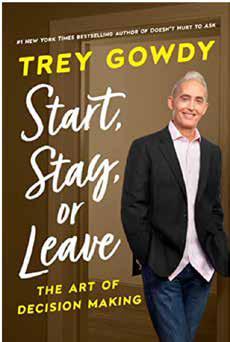

SERVING CALIFORNIA’S ANNUITY, LIFE AND HEALTH INSURANCE PROFESSIONALS / JUNE 2023 COLLABORATION / TECHNOLOGY / MEDICARE
Growing Your Business with
[&] Effect Elements [Passion. Authenticity. Collaboration. Trust.]
The [&] Effect is a feeling. It’s the confidence you have working with authentic people who thrive on collaboration. It’s the security of having your business handled by a team passionate about your success. It’s the gift of time you’re granted because you have a partner you can trust.

It’s a phenomenon only experienced with Word & Brown by your side.

48 | CALIFORNIA BROKER JUNE 2023 CalBrokerMag.com Experience Word & Brown | wordandbrown.com Northern California 800.255.9673 | Inland Empire 877.225.0988 | Los Angeles 800.560.5614 | Orange 800.869.6989 | San Diego 800.397.3381
When your clients are traveling abroad, whether for a long stay or a short visit, protect them with GeoBlue® travel health insurance. They’ll be able to choose from the most complete set of benefits and services in the industry, including medically necessary COVID-19 coverage. GeoBlue single trip and expatriate plans also include crucial benefits such as medical evacuation, access to a trusted provider network, direct pay for care, 24/7 support and peace of mind.
Learn more and register for your Agent ID at geobluetravelinsurance.com, contact us toll-free at 1-844-669-8743 or email us at partnerprogram@geo-blue.com.

All
and
We
you
the
for coverage and benefit details. GeoBlue is
Worldwide Insurance Services, LLC (Worldwide Services Insurance Agency, LLC in California and New York), an independent licensee of the Blue
and
GeoBlue is the administrator of coverage provided under insurance policies issued by 4 Ever Life International Limited, Bermuda, an independent licensee of the Blue Cross Blue Shield Association. INDV2249-BRK-9/22
insurance policies and group benefit plans contain exclusions
limitations.
recommend
consult
policy
the trade name of
Cross
Blue Shield Association.
THE JOURNEY OF A THOUSAND MILES BEGINS WITH THE RIGHT HEALTH INSURANCE.
a partnership that pays
BONUS PROGRAM - COVERAGE EFFECTIVE:
JULY 1, 2023 TO JANUARY 1, 2024
EARN
WHEN YOU SELL
Full Network PPO
• Blue Shield
HMO offerings from
• Blue Shield
•Kaiser Permanente
• Sharp Health Plan
CCSB offers 4-tier selection
Single bill
CoveredCA.com/ForSmallBusiness 844.332.8384
Some Key Rules:
1. Applies to new to Covered California for Small Business (CCSB) groups with initial effective dates of 07/1/23, 08/1/23, 09/1/23, 10/1/23, 11/1/23, 12/1/23 and 1/1/24
2. Agency must submit minimum of three groups to qualify for bonus program
3. Bonuses will be calculated on number of subscribers (employees) in e ect for the first e ective month of the policy as determined by CCSB.
4. No pro-ration of target values will take place.
5. Business written through partnering General Agencies qualifies.
6. Covered California will issue the second bonus (6+ groups) incentive payment forty-five (45) days following the conclusion of the incentive program so long as qualifying groups satisfy the ninety (90) day requirement outlined in Section (E)(2)(c) of Exhibit F of the Agency Agreement.





*Insurance companies vary by region and are subject to change. ® ccsb_12675_23_bonus

EXTRA
Contact your local Covered California for Small Business sales representative to learn why we’re growing and how we can help build your business! An increasing number of agents and their clients are NEW SMALL
glad they did.
GROUPS
Group Size (Enrolled Employees) Bonus Per Group (3 Groups / 6+ Groups) 51 - 100$ 8,000 / $12,000 26 - 50$ 4,000 / $6,000 11 - 25$ 2,000 / $3,000 4 - 10$ 1,000 / $1,500
Earn even more for offering your clients California’s most comprehensive access to doctors and hospitals:
NEW! CCSB offers more Blue Shield Plans
For a complete list of the program rules go to: http://www.coveredca.com/agents/PDFs/Agent-commission-schedule.pdf
TABLE of CONTENTS
12
Alzheimer’s Awareness
What’s Not So Funny About Alzheimer’s Disease?
Humor is important part of healing process
By Karyn Buxman
According to the latest numbers from the Alzheimer’s Association, more than 5.2 million people have this devastating condition.
14
LAAHU Summit Presenter: Your Health
Your Clients Must Know That Healing Is Possible
By Dr. Anoop Kumar, M.D.
Every broker wants their client to have a health insurance plan that is ideal for them. Every broker wants to make sure their client is taken care of in their time of greatest need.
18
Behavioral Telehealth
7 Key Elements of Virtual Behavioral Health Solutions
What brokers need to know
By Michael Gorton and Michael Brombach
As employers strive to bridge growing care gaps in behavioral and mental health, the nation’s brokers are positioned to help health plan sponsors make informed benefits decisions by selecting the optimal behavioral telehealth provider.
Cal Broker’s commitment is to be the leading source of news and information for California brokers and agents operating in the health, life, and annuity industry. We are committed to connecting Life and Health insurance professionals to valuable resources and solutions they can provide to their insurance clients.
22
MEDI-CAL
Medicaid (Medi-Cal) Unwinding
How will it impact Group and Individual Health Insurance Markets?
By Paul Roberts
The Families First Coronavirus Response Act (FFCRA), signed into law in March 2020, created the first major lifeline for Americans during the onset of the COVID-19 pandemic.
24
COLLABORATION
Flourishing through Trusted Partnerships: Growing Your Business with Collaborative Efforts
By Phil Calhoun
Ensuring brokers flourish: The key to long term survival is the ability to evolve.
26
MEDICARE EVENT
Come Explore the Medicare Jungle at the Senior Summit at Pechanga/
Temecula!
By Maggie Stedt
Explore ways to increase the referrals you receive, how to use social media more effectively and to create a business identity that will distinguish you from your competition!
28
LIFE SETTLEMENTS
Why Would Anyone Want to Sell Their Life Insurance Policy?
There are 2.5 million reasons each year
By Lisa Rehburg
That’s right — 2.5 million seniors a year will walk away from their life insurance policies. 500,000 seniors a year will lapse their life insurance policies, leaving behind an estimated $100 billion of benefits.
30 TECHNOLOGY
Employee Benefit Technology: Bridging the Gap between HR, Employees, and Brokers
By Ed Ligonde
One of the primary challenges that employees face when it comes to benefits is a lack of understanding.
4 | CALIFORNIA BROKER JUNE 2023 CalBrokerMag.com
JUNE
2023
SERVING CALIFORNIA’S ANNUITY, LIFE AND HEALTH INSURANCE PROFESSIONALS
32 TECHNOLOGY
Technology Helps Drive Increased Use of Healthcare Among Millennials
Financial stress and social isolation having a significant impact on behavioral health
By Craig Kurtzweil
Millennials — those between the ages of 27 to 42 in 2023 — are now the largest generational group covered in employer health plans.
34
IDENTITY THEFT PROTECTION
Offering Identity Theft Protection as an Employee Benefit
By Tiffany Stiller
By offering identity theft protection as a benefit, employers can demonstrate a genuine concern for their employees’ financial security and wellbeing.
36 MENTAL HEALTH
Ghost Networks and Long Wait Times: The Challenges of Accessing Mental Health Care
How brokers can help
By Carmen Ponce
Accessing mental healthcare is a major challenge in the United States, with many people facing significant barriers to getting the help they need.
38
LONG-TERM CARE
Is It or Isn’t It Long-Term Care Insurance?
Why 7702(b) matters for Long-Term Care planning
By Marc Glickman
Thanks to the conversations happening in states considering a payroll tax to cover a modest state-funded long-term care benefit, there’s more interest in understanding what qualifies as longterm care insurance.
40
COMMISSIONS
What is my Book of Business Worth?
For brokers looking to sell and active brokers looking to protect their commissions
By David Ethington
Determining the value of a book of business requires outlining specific information unique to each situation, defined by each seller and buyer in a given scenario.
PUBLISHER
Phil Calhoun HealtH Broker PuBlisHing, llC publisher@calbrokermag.com
EDITOR Linda Hubbard Lalande editor@calbrokermag.com linda@calbrokermag.com
ART DIRECTOR Randy Dunbar Randy@calbrokermag.com
PRODUCTION ASSOCIATE Zulma Mazariegos Zulma@calbrokermag.com
DIGITAL DIRECTOR Carmen Ponce Carmen@calbrokermag.com
CIRCULATION calbrokermag@calbrokermag.com
ADVERTISING
Health Broker Publishing 14771 Plaza Drive Suite C Tustin, CA 92780 (714) 664-0311 advertising@calbrokermag.com calbrokermag@calbrokermag.com
42
BOOK REVIEW
“Start, Stay, or Leave”
Author Trey Gowdy
By Phil Calhoun
In his new book, “Start, Stay, or Leave” Trey Gowdy provides a guide their decisions.
address notification at least 20 days prior to effective date; include old/new address to:
Health Broker Publishing 14771 Plaza Drive Suite C • Tustin, CA 92780 (714) 664-0311
California Broker (ISSN #0883-6159) is published monthly. Periodicals Postage Rates Paid at Burbank, CA and additional entry offices (USPS #744-450).
Subscriptions: U.S. one year: $18. Send change of to help people analyze, make, and own
POSTMASTER: Send address changes to California Broker, 14771 Plaza Drive Suite C • Tustin, CA 92780
©2023 by Health Broker Publishing. All rights reserved. No part of this publication should be reproduced without consent of the publisher.
No responsibility will be assumed for unsolicited editorial contributions. Manuscripts or other material to be returned should be accompanied by a selfaddressed stamped envelope adequate to return the material. The publishers of this magazine do not assume responsibility for statements made by their advertisers or contributors.
Printed and mailed by Southwest Offset Printing, Gardena, Calif.
JUNE 2023 CALIFORNIA BROKER | 5 CalBrokerMag.com IN EVERY ISSUE Industry News 7 Ad Index 46
Savvy Brokers Participate in CAHIP Capital Summit


A group of 145 health insurance professionals from California recently attended the CAHIP Capital Summit in Sacramento from May 8-10. The event, sponsored by the California Association of Health Insurance Professionals (CAHIP), was held at the Kimpton Sawyer Hotel and aimed to educate attendees on how to communicate with state legislators effectively. The summit also provided insights into the most pressing healthcare issues facing Californians. Speakers at the event included political analyst Mike Madrid, CAHIP lobbyist Faith Borges, and CAHIP VP of Legislation Dawn McFarland. Attendees also heard from Covered California’s Doug McKeever; Theresa Hasbrouck from the California Dept. of Health Care Services; and Dr. Kimberly Petrick from Kaiser Permanente.
A lively leadership panel from National Association of Benefits and Insurance Professionals (NABIP) featured President Eric Kohlsdorf, Region VIII VP Stephanie Berger, and Membership Chair Keith Wallace.


Incoming CAHIP President Tim Kanter highlighted the importance of growing the organization's membership, as a stronger membership would lead to a more influential voice in Sacramento and Washington, D.C. He emphasized the ongoing battle against Single Payer and the need for a louder voice to protect consumers' access to healthcare. “Membership growth is the key to helping us win these battles,” Kanter said. “To that end, I have one single goal for my term as president: to grow membership.”
Attendee Elizabeth Mitchell-Collord, a licensed agent in Mount Shasta City, praised the benefits of her CAHIP membership, which has expanded her understanding and network of top-tier professionals, enabling her to provide better resources for her clients. “I’ve had many jobs where I
was tasked with making the complexity of healthcare simple to understand,” Elizabeth shared with the group. “I love my role as an agent because I get to help clients connect with care and coverage. My membership with CAHIP provides resources to bring back to my clients. I encourage readers to join their local chapter and make a difference in this important industry at this critical time.” Be
JUNE 2023 CALIFORNIA BROKER | 7 CalBrokerMag.com CURATED NEWS FROM THE INDUSTRY
an advocate! Join CAHIP now at www.cahu.org! Make a REAL Difference!
MEET WITH LAWMAKERS TO ADVOCATE FOR INTERESTS OF OUR INDUSTRY CAHIP’s
Lobbyist Faith Borges and CAHIP VP of Legislation Dawn McFarland present at the summit.
Words and photos by Linda Lalande with Dawn McFarland.
Elizabeth Mitchell-Collord, licensed agent in Mount Shasta City, shared her positive CAHIP membership experience.
Dawn McFarland with CAHIP advocates at the Capital: L to R - Faith Borges, Paul Roberts, Tim Kanter, Eric Kohlsdorf.
Members of LAAHU Delegation with Assemblymember Lisa Calderon: L to R - Sonny Huynh, Elizabeth Underhill (LAAHU Legislative Chair), Assemblymember Calderon, Bruce Jugan and Dede Kennedy (CAHIP PAC Chair).
CURATED NEWS FROM THE INDUSTRY IN CASE YOU MISSED IT!
Highlights from LAAHU Symposium 2023


challenges. This is where the change begins! It’s great to attend these events, even more impactful as a member. Reach out to your local chapter and find out how you can become a member. It’s worth every minute!
Dawn McFarland shared on LinkedIn: (https:/bit.ly/3WsIkPp)
“If you weren’t there, you
missed a fascinating discussion about quantum physics. Did you know medical books have not been updated in 100 years? Maybe we could look at that as we work on fixing our system.
By NaShina Bush
This year’s LAAHU Symposium was one for the books! On its own, the health insurance industry is one that is ever-evolving. The impacts of Covid-19 continue to ripple through the industry leaving new challenges as well as new adaptations in its wake. Never before have we relied so heavily on technology to run our businesses. Never before have we needed the social and emotional support that stems from a worldwide pandemic.
In order to survive AND thrive in this industry, we must adapt to the new demands of the market. The lineup of guest speakers and exhibitors at the 2023 Symposium did not disappoint. From the opening meditation, to hearing from doctors Anoop Kumar, M.D. and Kimberly Petrick, M.D. to the technology panel, the symposium delivered refreshing insights on the state of the industry — coupled with CE courses to support the growth and development of our industry partners.
In addition to the learning opportunities, there was time to connect with one another again, IN PERSON. Seeing old friends re-connect over the lunch hour or seeing the spark of new friendships almost felt normal again. There’s tremendous value in sharing thoughts, ideas and laughter in a social environment.
Any broker or health insurance professional should really take the time to attend this annual event. Staying “in the know” is critical to our relevance in the industry. Our clients rely on us to have the answers to their questions and solutions to their
“Heard some scary facts about the post COVID affect on our healthcare spend , and even more important, that we are consistently DECREASING in average age of mortality. Great panel on the quickly evolving technology space and how to serve our clients with solutions. Learned more about how CBD could make a big dent in our Rx behavior, even correct some of our body’s deficiencies when properly managed.
“It’s a lot of hard news, mixed with innovation and opportunity for a healthier and happier us. I am truly grateful to work in these rooms, with these people, for the better good of all. I hope one day I see a health care system vs. our current sick care system. All of that, and it’s still the people for me.” Thanks, Dawn, for your snapshot! Your updates are always fun, and relevant!
Become a member here https://nabip.org/membership/join-now. When you become a member of the National Association of Benefits Professionals (NABIP) you are automatically joining your state and local chapter.
NASHINA BUSH, LAAHU DEI Co-Chair
and president of Employee Benefits and Onyx Benefit Designs.
nashina@onyxbenefitdesigns.com onyxbenefitdesigns.com

8 | CALIFORNIA BROKER JUNE 2023 CalBrokerMag.com
“Past (me, the “has been”), Present (June Taylor) and Future (Joshua Kaufman). Really proud of these #leaders, and everyone that continues to serve Los Angeles Association of Health Underwriters (LAAHU) and its members. Bravo to all of the #MightyLAAHU board and committee members!” ~ Dawn McFarland (as posted on LinkedIn: https://bit.ly/3WsIkPp)
Dr. Kimberly Ruth Petrick of Kaiser Permanente spoke at LAAHU Summit on chronic disease.
New 988 mental health crisis line sees ‘eye-opening’ rise in calls, texts, chats in first 6 months, data shows
Since the summer launch of the 988 Suicide and Crisis Lifeline, the new three-digit number has seen a significant rise in call volume — routing more than 2 million calls, texts and chat messages to call centers, with the majority being answered in under a minute.
Federal government data on the new 988 mental health crisis lifeline show that in December 2022 versus December 2021, calls answered increased by 48%, chats answered increased by 263% and texts answered increased by 1445%.
“The average speed to answer year-over-year was about three minutes in 2021. It’s now 44 seconds in December of 2022,” said Dr. John Palmieri, a senior medical advisor at the U.S. Department of Health and Human Services’ Substance Abuse and Mental Health Services Administration, who serves as 988’s deputy director.
https://www.cnn.com/2023/01/19/ health/988-lifeline-first-six-months-cnnanalysis
Happiness Break: Happiness Break
Contemplating Our Interdependence With Nature, With Dekila Chungyalpa
REPORT: MA ENROLLMENT INCREASES TO HALF OF ALL ELIGIBLE MEDICARE BENEFICIARIES
Medicare Advantage enrollees now account for just over half of all Medicare beneficiaries for the first time in history, a recent analysis found. The Kaiser Family Foundation (KFF) report relied on data from the CMS Medicare Advantage Enrollment files and the CMS Medicare Enrollment Dashboard.
KFF found that out of 59.82 million people with Medicare Part A and Part B in January 2023, 30.19 million people were enrolled in Medicare Advantage plans, which are offered by private insurance companies. Medicare Advantage enrollment has steadily increased over the last several years. In 2007, Medicare Advantage enrollees only represented 19% of total Medicare beneficiaries, according to KFF. A report from the organization last year found that Medicare Advantage enrollment reached 48% of all Medicare beneficiaries, and KFF even predicted then that Medicare Advantage would become the predominant form of Medicare coverage by 2023. https://bit.ly/3Ic5V0P
JUNE 5-7
#Q4Live Q4LIVE for Benefit Professionals, SAN DIEGO ‘23, Register: https://bit.ly/3MliLLF Info: https://q4live.q4intel.com 1-314-973-7422
June 12
9:30A - 5:00 pm PST 2023
CAHIP-IEAHU Richard Hawkins Memorial Annual Golf Tournament, Riverside, Calif. Register: https://ieahu.net/
June 13-15, 2023
AHIP 2023 Conference
Portland, Oregon. Register: www.ahip.org
June 15, 9:00 - 11:00 am PST
GAAHU ANNUAL MEMBER APPRECIATION/JOHN MUIR HEALTH CANCER PAVILION TOUR, Walnut Creek, Calif. Register: www.ggahu.org
June 22, 10-4 pm PST
SVAHU 5th Annual John Bobincheck Memorial Golf Classic 2023, Pleasanton. Calif. Register: https://svahu.org
June 25-28 2023
MDRT Annual Meeting
Nashville, Tenn. Register: https://annualmeeting.mdrt.org/
August 22 - August 24, 2023
“Senior Summit: Exploring the Medicare Jungle,” Pechanga Resort, Temecula, Calif. Register: https://theseniorsummit.net/
https://bit.ly/4282EYf
JUNE 2023 CALIFORNIA BROKER | 9 CalBrokerMag.com
Take 10 minutes to renew your connection to the earth through this guided meditation on our interdependence with the ecosystem.
SHINE A LIGHT ON ALZHEIMER’S
The
Day
With the Most Light Is the Day We Fight®
The Longest Day is the day with the most light — the Summer Solstice. On June 21, thousands of participants from across the world gather to fight the darkness of Alzheimer’s through an activity of their choice. Together, they use their creativity and passion to raise funds and awareness for the care, support and research efforts of the Alzheimer’s Association.
Alzheimer’s is a type of dementia that affects memory, thinking and behavior. Symptoms eventually grow severe enough to interfere with daily tasks. Alzheimer’s is the most common cause of dementia, a general term for memory loss and other cognitive abilities serious enough to interfere with daily life. Alzheimer’s disease accounts for 60-80% of dementia cases.
https://www.alz.org/alzheimers-dementia/difference-between-dementia-and-alzheimer-s

Men’s Health Month
“As we prepare to celebrate Father’s Day and recognize the important men in our lives, it is critical that we bring attention to the unique health concerns that men face. Men have an average life expectancy of almost six years less than women, but by emphasizing the importance of education, physical fitness and disease screenings, we can work to improve this statistic in California.
Alzheimer’s disease is considered to be younger-onset Alzheimer’s if it affects a
Alzheimer’s is not a normal part of aging. The greatest known risk factor is increasing age, and the majority of people with Alzheimer’s are 65 and older. person under 65. Younger-onset can also be referred to as early-onset Alzheimer’s. People with younger-onset Alzheimer’s can be in the early, middle or late stage of the disease.
Spread the word about “The Longest Day” on social media and shine a light on the fight against Alzheimer’s. WEAR PURPLE. Use the hashtags #ENDALZ #TheLongestDay
Read about the 10 signs of Alzheimer’s Disease: https://www.alz.org/alzheimersdementia/10_signs
Employers Aren't Satisfied With Payers' Mental Health Coverage
Link: https://bit.ly/411PHOw
“Many serious men’s health concerns, especially colon, testicular and prostate cancer, can be combated through early detection. This is why regular doctor check-ups are so vital. The threat of other conditions, like high blood pressure, diabetes, high cholesterol and heart disease, can be easily reduced by eating nutritious foods, getting plenty of exercise and maintaining a healthy well-being. Additionally, when men make good lifestyle choices, they serve as an example for their families, encouraging their loved ones to follow in their steps.
Each of us has special men in our lives, and I urge all Californians to remind their fathers, sons, brothers, husbands, grandfathers and others to make their health a priority this month and all year long. By doing so, we will build a stronger Golden State.”
CalBroker asks you to take the time to acknowledge Father’s Day by observing Men’s Health Month, by encouraging men to make sure they are getting appropriate health screenings and making healthy life choices.

10 | CALIFORNIA BROKER JUNE 2023 CalBrokerMag.com
is
Proclamation from the State of California
A survey finds health plans have room for improvement in areas such as having accurate behavioral health directories. Nearly all employers agree that mental health coverage is a vital component of benefits offered to employees, but few are satisfied with their health plan's services.
Failure to Survive Product Line






JUNE 2023
liberal underwriting standards and unique flexibility, the Failure To Survive coverage provides a death benefit, and can accommodate impairedrisk
postponed
market carriers. •Contract Indemnity FTS •Key Person FTS •Buy/Sell FTS •Business Loan FTS FAILURE TO SURVIVE LOAN INDEMNITY CONTRACT INDEMNITY BUY/SELL INDEMNITY KEY PERSON INDEMNITY ® CA License #: 0591207 Petersen International Underwriters (800)345-8816 F www.piu.org F piu@piu.org When Traditional Carriers Can’t...or Won’t ® ®
With
cases that would typically be declined or
by traditional
ALZHEIMER’S AWARENESS
What’s Not So Funny About Alzheimer’s Disease?
Humor is important part of healing process
BY KARYN BUXMAN
When I was 12 years old, my mom quit nursing to take up flying. She went on to be a flight instructor, flew charter, flew air ambulance, and by the time I was sixteen she’d mastered acrobatics. The first time she flew me upside down in an airplane I truly believed she was the bravest woman I’d ever met.
And then the day came when she asked me how to tell the difference between my dad and “that other guy in the house” who looked just like him. As my family and I assisted her on her journey through Alzheimer’s she confirmed my beliefs. She really was the bravest woman I’ve ever met.
At one point she said, “I’m glad I’ve learned about humor. I’m not laughing all the time, but I’m not crying all the time.” Humor became an important part of the healing process. It didn’t cure her Alzheimer’s. It probably didn’t increase the number of her days. But it did help improve the quality of her days.
What’s Not So Funny About Alzheimer’s Disease?
Let’s take a moment to acknowledge that there’s an awful lot that’s not funny about Alzheimer’s disease. According to the latest numbers from the Alzheimer’s Association, more than 5.2 million people have this devastating condition. Two-thirds of these people are women. If you’re a woman over the age of 60, your chance of developing Alzheimer’s disease is 1 in 6.
Alzheimer’s kills almost 122,000 people a year (that is the equivalent of FIVE 747s crashing every week…). Approximately 5 million Americans may have mild cognitive impairment due to early stages of Alzheimer’s and not even know it! Alzheimer’s doesn’t just impact the person diagnosed. Spouses, families, and caregivers are struggling to contain America’s Alzheimer’s disease epidemic.
More than 60% of all Alzheimer’s caregivers are women. A woman is 2.5 times more likely to become a caregiver than a man — yet taking on caregiving duties doesn’t remove all the other responsibilities women have, which often include a fulltime job; raising children; maintaining healthy relationships with
their romantic partner, friends, and community; providing most of the housework; and more.
These are just the big numbers. The small numbers — the impact that Alzheimer’s disease can have on one family — are just as jaw dropping. When a parent, spouse or other loved one develops Alzheimer’s disease there’s often a dramatic financial impact on the family’s life. Stories of job loss are extremely common. Not all employers are understanding when someone must leave the workplace abruptly when Mom wanders off.
The numbers are overwhelming, and the situation seems hopeless. But there is hope. Scientists, researchers, and thousands of clinicians are working every day to discover a way to cure this devastating disease. Communities of caregivers have come together to educate, empower, and support each other. We all have some wisdom to share in the face of this national challenge. The disease isn’t funny. But there are many things in the world that are, and knowing about them is going to make life a little easier for everyone.
Whether you’re an agent, broker, caregiver, family member or friend, here are 5 ways to harness humor to better deal with Alzheimer’s and dementia:
1. Reminisce about funny memories: In dementia, shortterm memory is lost first and then longer-term memories. While your mom or grandmother can’t remember what day it is, they can most likely recall in detail the time that your dad dropped the Thanksgiving turkey on the floor, or when Aunt Martha tried to blow out the candles on her cake and blew her teeth out instead. The shared laughter will make you both feel better.
2. Tap into sitcoms and radio shows they’ll remember: While your loved one may not relate to “Curb Your Enthusiasm,” chances are pretty good that they will resonate with “I Love Lucy” or “The Andy Griffith Show.” If they have enough capacity to watch television, comedies from their early years
12 | CALIFORNIA BROKER JUNE 2023 CalBrokerMag.com
may still tickle their funny bone. Watching together can provide great opportunities to still bond.
3. Connect with other caregivers: Many Alzheimer’s disease caregivers find great value in chatting with other people who are in the same situation. (That’s how I learned about taking my mom for a drive when she wanted to go home — but she already was home.) A great resource you should know about is the Caregivers Forums on the Alzheimer’s Association website: http://www.alz.org/help-support/caregiving. In addition to sharing caregiving tips and strategies, there’s a lot of therapeutic humor shared between site members that really makes coping that much easier.
4. Turn up the music: Long after persons with Alzheimer ’s lose their ability to communicate, many are still able to enjoy music and even sing. Whether it’s pulling up a playlist or just belting out a favorite song from their youth, music is a great way to share fun time together.

5. Make eye contact with a simple smile: Smiling and laughing are two of our most early means of communication and they are among the last to be lost. When having a conversation is no longer an option, making direct eye contact and smiling, even gently chuckling, will trigger mirror neurons in the brain and spark a smile or laugh in return.
June is National Alzheimer’s Awareness Month. Take this opportunity to help your clients, your friends, and loved ones to tap into the numerous helpful resources available to them — most especially humor!
KARYN BUXMAN, CSP, CPAE, is CEO and founder of HighPerformanceHumor.com. She is a TEDx speaker, successful author, and neuro humorist (she lives at the intersection of humor and the brain.) A pioneer in the emerging science of applied humor, Karyn helps high performers expand their influence, strengthen their relationships, and boost their resilience. She’s one of 265 people (and only 58 women) in the world to be inducted into the National Speakers Association’s Speaker Hall of Fame. Karyn is serious about humor!

Karyn was a presenter at the recent 2023
Ellevate Foundation’s Women’s Leadership Summit. They’ve just announced the date for 2024:
March 25-27.
More soon at: www.ellevatefoundation.org
Contact: www.HighPerformanceHumor.com
karyn@karynbuxman.com
JUNE 2023 CALIFORNIA BROKER | 13 CalBrokerMag.com
Your Clients Must Know That Healing Is Possible
Nutrition, Movement, Connection and Rest constitute the foundation of health and healing
 DR. ANOOP KUMAR, M.D.
DR. ANOOP KUMAR, M.D.
14 | CALIFORNIA BROKER JUNE 2023 CalBrokerMag.com
YOUR
HEALTH
Every broker wants their client to have a health insurance plan that is ideal for them. Every broker wants to make sure their client is taken care of in their time of greatest need. When people come to me in the ER in their time of greatest need, I too hope that they have whatever support they need to get through that difficult time. But what about the other side of the equation? What about those times when a person may not be sick or diseased, but is still not functioning optimally and not enjoying their lives with as much ease, capacity, or power as is possible? This too is a function of their health.
We often think about health only when it’s not there. But those of us who take responsibility for the health of others, including clinicians, brokers, agents and managers in healthcare, also have a tremendous opportunity to show people that health is something that is always here and something that we can always work with to achieve great things in our lives.
Health, after all, is a modification of the word heal, and the word heal itself is derived from the word whole. In other words,
health is wholeness and completeness. So, if we truly understand what health means, there would be nothing more to say. It is whole and complete in itself. Today, however, we see health as something fractional, something to be addressed only at a certain time, and something that gets us back to a baseline state of function. In fact, health is much more.

Health is the expression of human potential. Whatever you are capable of is represented by the word health. We too rarely ask the questions, “What is possible? What is my capacity? What is my potential? How do I unleash this?” Cultures around the world have been asking and answering this question for millennia. While the details of how we address this question may change over time, the fundamentals have not changed.
If we want a plant to grow, we must give it water, nutrients in the soil, and sunlight. No amount of complementary additives can replace these fundamental engines that drive the growth of the plant.
JUNE 2023 JUNE 2023 CALIFORNIA BROKER | 15 CalBrokerMag.com
Health is the expression of human potential. Whatever you are capable of is represented by the word health. We too rarely ask the questions, “What is possible? What is my capacity? What is my potential? How do I unleash this?”
there are Four Engines that are critical.
Similarly, when it comes to human sustenance and growth, These are:

• Nutrition
• Movement
• Connection
• Rest
By convention, these are fundamental. No amount of complementary treatment can replace these, and that includes antibiotics, IV medications, surgery, and CT scans — all of which I use in good measure for my patients in the ER. All of these may be necessary in certain situations as a complement to the Four Engines of health and healing, but none can replace them.
Yet, today, we have come to believe that modern medicine is conventional medicine, while we believe that which is fundamental and has been so by convention for millennia is complementary. Our understanding of conventional and complementary medicine is backwards, and this is limiting the health of ourselves, our families, and our clients and their families.
Let’s set the story straight. Modern medicine has a critical role in our society, but first and foremost, it is complementary medicine. It is not primary medicine. It is not conventional medicine. When we see this clearly, the mind starts to open up and ask, “What is conventional medicine, then? What should I be doing?” This is the dawn of a new possibility.
The Four Engines of Nutrition, Movement, Connection and Rest effectively constitute the magic pill

16 | CALIFORNIA BROKER JUNE 2023 CalBrokerMag.com
I believe that if we talked about these stories of healing more and researched them more, then the very idea that any disease is incurable would disappear. We know today that a majority of conditions are linked to inflammation. We also know there is a direct link between the food we eat, how we move, our relationships, our sleep and inflammation and its effects on the body.
that our society has been looking for. Put simply, when people activate and rev one or more of these engines, they heal. I have interviewed dozens of people who have healed from apparently incurable conditions, including advanced cancer, severe heart disease, multiple sclerosis, inflammatory bowel disease, rheumatoid arthritis, schizophrenia, and more, by revving these engines. What I’ve discovered in interviewing these people is that these examples are not nearly as rare as we may think. For every person who is willing to tell their story on a podcast, it’s likely that there are at least dozens of others who do not want to share publicly. Even the people that I spoke with were sometimes reluctant to share their stories because the standard response is often that it’s not possible or logical, so it must not be true.
It’s not only the people who have experienced healing themselves who are reluctant to share their stories. The physicians of most of these people who healed did not write up the case studies in the medical literature. In some cases, the interviewees were explicitly told that their stories would not be written up because others may choose to change their treatment plan based on the stories. It’s understandable that we physicians would not want other people to make a choice that may not work for them. At the same time, we should not withhold critical information about what is possible from others. We have to put the information out there responsibly and allow others to know what is possible and make their own choices.
I believe that if we talked about these stories of healing more and researched them more, then the very idea that any disease is incurable would disappear. We know today that a majority of conditions are linked to inflammation. We also know there is a direct link between the food we eat, how we move, our relationships, our sleep, and inflammation and its effects on the body. In other words, attending to Nutrition, Movement, Connection and Rest heals inflammation in the body, shifts the hormones and neurotransmitters in the body, and ultimately facilitates healing and changes our state of health.
The two most common fatal diseases in the United States are heart disease and cancer, both of which are linked to inflammation. The most common non-fatal conditions, including hypertension and Type 2 diabetes, are also linked to inflammation. I believe that 50% or more of the conditions in this country would be significantly improved, if not completely eliminated, if we attended to these Four Engines. This is critical for your clients to know.
There are many wellness programs today that emphasize aspects of healing and wellness. But few get straight to the point with a concise and comprehensive picture, so let me say it here. Nutrition, Movement, Connection and Rest constitute
the foundation of health and healing. This is primary medicine. This is conventional medicine. And its power is in your hands and the hands of your clients. Everything else has its place as complementary medicine, including my work in the ER.
What is especially heartening and beautiful is that these Four Engines are not just about wellness or prevention, as is commonly thought. People have used these to reverse acute disease, reverse chronic disease, improve their fitness, and more. Furthermore, the exact same practices also help to develop insight and mental clarity. The Four Engines are not just a map for prevention or a map for general well-being, but a meta-map that embraces the entire trajectory of life in its purview.
So, the next time you meet your client, in addition to showing them the best insurance plan that can help them in their time of need, teach them how they can begin to take their life to the next level right now. It’s not about making a complete overhaul or being perfect; it’s simply about knowing which steps to take in the right direction. As they do this, they will indeed realize that health is something more than they thought. They will realize health as the expression of their potential.
DR. ANOOP KUMAR, M.D. is an emergency physician. He is co-founder and CEO of Health Revolution and co-creator of Health Jumpstart.

From Dr. Kumar: “As an ER doctor for more than 15 years, I have witnessed health care problems most can’t bear to imagine. What I came to discover in being with those who are suffering is an immutable truth: There is an emergency in health care that no one is talking about…We don’t fully know what health is.
“As a medical student, I had a near-death experience that changed the way I saw health forever. It opened me to a field of infinite potential where I ran into the limits of my own medical training. I saw a vast terrain with multi-directional pathways that support healing. My purpose is now to guide people along these paths so they can experience what health truly means.”
Contact: healthrevolution.org •
Link to course:
https://healthrevolution.org/healthisinfinitepotential Link to podcast:
https://www.youtube.com/c/HealingIsPossiblechannel
Dr. Kumar was a presenter at the recent LAAHU Annual Symposium.
JUNE 2023 CALIFORNIA BROKER | 17 CalBrokerMag.com
•
I believe that 50% or more of the conditions in this country would be significantly improved, if not completely eliminated, if we attended to these Four Engines. This is critical for your clients to know.
Key Elements of Virtual Behavorial Health Benefits
What brokers need to know
BY MICHAEL GORTON and
BEHAVORIAL TELEHEALTH
18 | CALIFORNIA BROKER JUNE 2023 CalBrokerMag.com M I C H A E L B R O M B AC H
As employers strive to bridge growing care gaps in behavioral and mental health, the nation’s brokers are positioned to help health plan sponsors make informed benefits decisions by selecting the optimal behavioral telehealth provider. The terms telepsychiatry or telemental health are also used to describe a subset of telemedicine that uses telecommunications or videoconferencing technology to provide mental health services.

The emergence of providers offering these cost-effective care options comes in response to a changing workplace environment. Virtual behavioral health solutions provide a range of services, including psychiatric evaluations, therapy (individual therapy, group therapy, family therapy), patient education and medication management. The intention is to provide additional access to care by reducing barriers, including needing transportation, childcare or time off work in order to meet with a doctor.
Why the immediate concern?
The increased prevalence of behavioral or mental health issues is documented by the Substance Abuse and Mental Health Services Administration (SAMHSA). They report that more than one in four adults living with serious mental health problems also has a substance use disorder (SUD). Substance use problems occur more frequently with certain mental health problems, including depression, anxiety disorders, schizophrenia or personality disorder.
Furthermore, the severity of mental health conditions among children and teens has increased sharply. For as long as 10 years leading up to the pandemic, feelings of persistent sadness and hopelessness — as well as suicidal thoughts and behaviors — increased by about 40% among young people, according to the Centers for Disease Control and Prevention’s (CDC) Youth Risk Behavior Surveillance System.
Given these and other stressors, it is now a priority for brokers to help clients ensure that their employees and families are receiving behavioral and mental health care when they need it.
Understanding the Difference Between Mental Health versus Behavioral Health
Brokers will encounter the terms “behavioral health” and “mental health” which are often used interchangeably. However, there are subtle differences and approaches to managing problems.
Behavioral health as defined by the American Medical Association generally refers to SUD, life stressors and crises, and stress-related physical symptoms. The discipline examines how a person’s habits impact their overall physical and
mental wellbeing and has more to do with the specific actions people take and how they respond in various scenarios.
Mental health as defined by The World Health Organization is “a state of well-being in which every individual realizes his or her own potential, can cope with the normal stresses of life, can work productively and fruitfully and is able to make a contribution to his or her community.” The term encompasses a number of factors, such as the individual’s biology, psychological condition and habits and has more to do with thoughts and feelings.
JUNE 2023 CALIFORNIA BROKER | 19 CalBrokerMag.com
Key Aspects of Telebehavioral Health – also known as Telepsychiatry
Integrate Virtual-First Behavioral Health Solutions with Primary Care
Virtual-first is the future of healthcare – treating people holistically and meeting them where they’re at. Brokers should look for a collaborative model that unifies primary care physicians, mental health professionals and specialists to effectively deliver the care every person deserves.
Today, forward-looking healthcare organizations are integrating primary care and behavioral care services into one seamless, innovative virtual care model. To optimize service, this approach should include therapy, counseling, psychiatry and medication management, all offered through secure and private online video and phone sessions. This combination presents brokers with options that offer clients opportunities to lower costs, improve outcomes and deliver better member experience scores.
A virtual care model that has thoughtfully designed and implemented a behavioral health solution to be a part of its core primary care services, enables members to access the right level of both behavioral health and primary care. This capability navigates members to their primary care doctor, a counselor or a psychiatrist based on their conditions, history, and acuity. By selecting this model of virtual care, brokers can better help their clients streamline access to the right level provider and appropriate care.
Address Preventable Emergency Department (ED) Visits
Brokers recognize the cost and quality implications of overutilization of ED services. Unfortunately, frequent ED users with mental health and addiction challenges are in dire need of effective treatment and case management beyond the constraints of the local EDs. Further, pediatric emergency physicians may struggle to provide effective care and consider the ED ill-suited to ensure continuity of care when treating
alcohol or SUD-related issues among adolescents.
When telepsychiatry is available 24/7 365 to patients who need access to affordable, convenient, quality care on-demand, the right virtual care model helps bring more timely psychiatric care to the frequent ED users with mental health, alcohol and addiction challenges. An estimated one in eight ED visits involves a mental health and/ or substance use condition, according to the Agency for Healthcare Research and Quality (AHRQ). Many EDs do not have psychiatrists on-site to support people with serious mental health issues in person. Brokers that provide clients with the ability to access psychiatric care through a virtual behavioral health solution reduce dependency upon EDs and lower ED utilization costs.
While telepsychiatry may involve direct 1:1 interaction between a psychiatrist and patient, including video or audio-only care, it also encompasses psychiatrists supporting other clinicians, including primary care providers, with mental health care consultation and expertise.
Address Clinician Shortage
Today, telepsychiatry via phone and online communications improves access to care and enables workers of all ages to more readily receive behavioral or mental health care services with a clinician. Studies confirm that the U.S. has a shortage of mental health providers and estimates are that the country will be short between 14,280 and 31,109 psychiatrists in the next few years. This is highly problematic for employees who eventually recognize that they need help but may not be able arrange an appointment with a doctor. Virtual behavioral health — telepsychiatry — effectively closes this gap in care.
Ensure HIPAA Compliance
Health care providers were given 90 days to comply with HIPAA telehealth rules after the COVID Public Health Emergency (PHE) ended at midnight on May 11, 2023. The U.S. Department of Health and Human Service’s Office of
Civil Rights (OCR) announced that it will continue to exercise its enforcement discretion — and not impose penalties — on covered providers for noncompliance with unsecure video chats or FaceTime during the 90-day transition period, which will expire on August 9, 2023.
Brokers may be aware that during the public health emergency, providers did not have to be licensed in the state in which the patient was located and were allowed to treat patients in other states. In addition, non-HIPAA-compliant platforms were allowed if they were not public facing, such as video chats or FaceTime. However, it is important that brokers connect clients with virtual care vendors that have transitioned to this change, becasue these flexibilities are coming to an end, with other telehealth provisions set to expire at the end of 2023 and 2024.
Examine Role of Pharmacogenomics
Culturally intentional care and inclusion of optional pharmacogenomics, also called pharmacogenetics for medication management, are a recent advancement for only a few virtual behavioral health providers. Brokers should ask a potential virtual care provider if they include this emerging area of medicine that focuses on understanding how genes might affect individual responses to treatment or affect medication choice or dose.
Pharmacogenomic testing (PGx) informs prescribing decisions and helps to recognize and address the role of genetics in medication management. It has been proposed that addressing genetic variations in patients by individualizing prescribing can maximize treatment benefit and reduce undesirable outcomes.
Make Healthcare More Affordable
Brokers should be on the lookout for virtual behavioral health/ telepsychiatry options that help to combat increasing health insurance plan costs. Generally, these appointments cost less than comparable in-office visits. According to a study, net cost savings is estimated at $19 to $21 per telemedicine
20 | CALIFORNIA BROKER JUNE 2023 CalBrokerMag.com 1
visit, depending on where the employee would have otherwise sought care. It’s important to remember that these are generalizations and brokers should consider the unique healthcare needs of their clients. For example, employers with families that have children/teenagers may find it critical be able to access telepsychiatry that results in a reduction in the number of ED and urgent care visits, as explained earlier.
Furthermore, new reports show:
• more than 100 million people in the United States don’t have a primary care provider (PCP),
• about a quarter of those are children;
• 26% of adults under the age of 30 do not have a PCP.
This data nullifies the opportunity for integrating behavioral health with primary care, a challenge that is resolved by adopting the right virtual behavioral solution.
Address New Data on ER Visits by Children, Teens and Young Adults
Mental health-related visits to the emergency room by children, teenagers and young adults soared from 2011 to 2020 and rising from 4.8 million to 7.5 million, according to a new report published in the Journal of the American Medical Association. The sharpest increase was for suicide-related visits, which rose fivefold. The findings indicated an “urgent” need for expanded crisis services, according to the team of researchers and physicians who published the report.
The number of visits rose for many conditions, including mood and behavioral disorders, substance use and psychosis. But the increase in suiciderelated issues was most pronounced, increasing to 4.2 percent of all pediatric emergency room visits in 2020 from 0.9 percent in 2011.
This clearly matters since a growing number of children and adolescents are grappling with mental distress, but medical systems have not kept up. Insufficient treatment options and availability of preventive care is leading many families to seek help in emergency
rooms, which are ill-equipped to deal with mental health-related issues.
Telebehavioral health options are part of a dedicated commitment to address these care gaps.
Brokers Guide Employers to Optimal Virtual Behavioral Health – also called Telepsychiatry


The COVID-19 pandemic triggered a rapid expansion of virtual behavioral health and telepsychiatry. A 2022 study of 126 million patients across all 50 states found that 39% of mental health visits were virtual and it is expected that utilization of behavioral telehealth will continue as the COVID-19 pandemic subsides. Advantages of this approach include greater access, flexibility, convenience of routine care, and potential for increased privacy.
Clearly, the convergence of technology, growing patient demand, greater regulatory flexibility and greater availability of payment for behavioral health care continue to support telehealth as a driver of greater access to behavioral health services. Regulatory developments also continue to boost the use and expansion of telehealth as a critical component of rendering behavioral healthcare, including extended flexibilities in providing such care, removal of geographic restrictions, loosening of certain healthcare supervision requirements.
Brokers are now tasked with helping clients select a virtual solutions provider that respects mental health services as an essential part of the human experience. Employees need easy access to virtual primary care and mental health support in a way that respects individual privacy, is collaborative and fully integrated.
MICHAEL GORTON
is a quintessential entrepreneur and company builder. As CEO of Recuro Health he leads a team which includes several leaders from Teladoc, where he served as the founding CEO and pioneered an industry-changing health care model that created a new efficiency paradigm in healthcare. Gorton coauthored and published “The Digital Medical Home,” a compendium of stories, personal anecdotes and true accounts of how telemedicine was born and how it grew into the industry we know today. Ernst & Young LLP (EY US) recently named Gorton as one of the 2022 Entrepreneurs of The Year® based upon his entrepreneurial spirit, purpose, growth and impact, among other core contributions and attributes.
mgorton@recurohealth.com
MICHAEL BROMBACH is a contributing author to The Digital Medical Home and has published multiple thought leadership articles on topics including, how to solve healthcare’s complexity, future applications of virtual care models, the growth potential of consumerism in health care, and provider transformation. As Chief Operating Officer of Recuro Health, he leads strategy and development of Recuro’s digital health platform and products, overseeing integration, go-to-market strategy, and future product innovation.
Contact: Website: www.recurohealth.com
mgorton@recurohealth.com
michael.brombach@recurohealth.com
JUNE 2023 CALIFORNIA BROKER | 21 CalBrokerMag.com
Medicaid / Medi-Cal Unwinding
HOW WILL IT IMPACT GROUP AND INDIVIDUAL HEALTH INSURANCE MARKETS?
 By Paul Roberts
By Paul Roberts
The Families First Coronavirus Response Act (FFCRA), signed into law in March 2020, created the first major lifeline for Americans during the onset of the COVID-19 pandemic. It particularly addressed the immediate needs of working Americans who had suddenly lost their paychecks and/ or their jobs — and their subsequent eligibilities for health insurance. Now that the pandemic has reached its end (although COVID-19 remains a health issue), some of the changes created by FFCRA are expiring — especially for those covered by federal and state Medicaid programs. (Medi-Cal in California.)
–Under the FFCRA, states were enticed to expand their Medicaid programs to ensure continuous enrollment of Medicaid enrollees during the COVID-19 National Emergency. Throughout the pandemic, Medicaid beneficiaries have remained enrolled in the program regardless of changes in income or status.
Medicaid is a federally facilitated, state-administered, jointly funded health care program for low-income American families, adults, children, pregnant women, elderly adults, and people with disabilities. While each state’s Medicaid program varies, Medicaid generally provides zero- or low-cost coverage to beneficiaries based on their household income. In California and most other states, residents are eligible for Medicaid if they have household incomes of up to 138% of the Federal Poverty Level (FPL). Although ineligible for Medicaid,
JUNE 2023 MEDI-CAL
earners with incomes between 138-400% of FPL are eligible for subsidies called Premium Tax Credits (PTCs), to help them pay the cost of Individual coverage purchased on a state exchange (such as Covered California).
California’s Medicaid program is called “Medi-Cal,” and it covers nearly one-third of the state’s population. California’s Medi-Cal program increased its enrollment by 16% during the pandemic.
Because of the impacts of the pandemic, many people became newly eligible for Medicaid. Due to the “continuous enrollment provision” and other COVID factors, enrollment in the program boomed. Between March 2020 and December 2022, Medicaid experienced a nationwide enrollment increase of 21.1 million Americans, bringing the total number of enrollees to approximately 92.3 million.
The Consolidated Appropriations Act of 2023 declared an official end to Medicaid’s “continuous enrollment provision,” and assigned it a sunset date of March 31, 2023. Beginning April 1, 2023, states could begin to “unwind” their more than three-year COVID protocol and resume Medicaid eligibility determinations — and subsequent disenrollments. The Kaiser Family Foundation estimates 5-14 million Americans will have coverage disrupted or eliminated entirely because of Medicaid “unwinding.”
California began its revaluation of Medi-Cal beneficiaries’ eligibilities in April 2023. Redeterminations are being processed monthly, beginning with people who enrolled in Medi-Cal in the month of June (of any year). June enrollees will have from the beginning of April through the end of June (approximately three calendar months) to recertify. Those who no longer qualify for coverage will be disenrolled from Medi-Cal as of July 1, 2023. California will continue these certifications on an ongoing, monthly basis until May 2024.
California law requires the state to enroll all Medicaid dis-enrollees in the lowest-cost silver Individual & and Family Plan (IFP) available to that person on Covered California — or the individual’s same managed care plan (if it is available). To qualify, the applicant must also qualify for PTC subsidies to help pay for some, or all, of the silver plan’s premium. Furthermore, enrollees can elect any IFP plan available to them
within Covered California — including bronze, gold, silver, and platinum tier plans.
Disenrollment from Medicaid also triggers a qualifying event that establishes a Special Enrollment Period (SEP).

Employees who waived job-based coverage because of ongoing Medicaid enrollment can utilize the SEP to enroll in their group health plans outside of Open Enrollment.
Federal law establishes a 60-day timeframe for SEPs, beginning on the day of the qualifying event. Those who find themselves ineligible for Medicaid (and subsequently disenrolled) with access to an alternate group plan — including a spouse’s or parent’s plan — will be impacted.
Those who do not respond to attempts for recertification will be disenrolled but may be eligible to enroll again — if eligibility is proven later, a Medicaid process called “churning.” The industry forecasts minorities and non-English speaking residents will be impacted the most by churning, because of address changes and/or the inability to understand the recertification procedure.
Any person covered by Medi-Cal should anticipate recertification and respond to notices in a timely manner. When switching from Medicaid to IFP or group insurance, brokers and consumers should be cognizant of provider networks, premiums, and cost-sharing within the health plan.
PAUL ROBERTS, REBC, is senior director of Education and Market Development at the Word & Brown General Agency. Established in 1985 and headquartered in Orange, Calif., Word & Brown is one the state’s largest independently owned general agents. A highly active member of the National Association of Benefits and Insurance Professionals (NABIP) and California Agents and Health Insurance Professionals (CAHIP), Paul is a frequent speaker and educator to local association chapters across the country and has served in various association leadership roles. Contact: www.wordandbrown.com
Group insurance brokers should educate their clients on these Medicaid/Medical unwinding principles, so they can anticipate a potential increase in enrollment
and support requests for their group health plans. Furthermore, employers and their employees should be reminded that an offer of “affordable” coverage from an employer (of any size) disqualifies that employee — and potentially the employee’s entire family — from Premium Tax Credit eligibility on a state exchange.
An offer of coverage is considered “affordable” for the employee if the employee’s contribution for the lowest-cost, self-only premium (for a plan that provides minimum value) does not exceed 9.12% of the employee’s pay in 2023. Family coverage is considered affordable if the employee’s contribution for the entire family’s premium, based on the lowest-cost plan, does not exceed 9.12% of household income. That is a change resulting from the ACA’s “Family Glitch fix” in late 2022.
JUNE 2023 CALIFORNIA BROKER | 23 CalBrokerMag.com
Flourishing through Trusted Partnerships: Growing Your Business with Collaborative Efforts
By Phil Calhoun
For over four decades, California Broker has provided information and resources for health and life insurance professionals in California. During this period, over 25,000 brokers have read and responded to our content monthly. As we work to reinforce trust within the broker community, we consistently seek to provide articles that bolster broker’s ability to be better advocates for their clients. This series is on the value of collaboration and is intended to help brokers bring solutions to clients and grow their business.
We plan to continue to work with our gifted authors who enable us to contribute timely, valuable information and expertise to California Broker readers. We remain committed to the goal of being a trusted resource for our subscribers who depend on learning and growing, and seek to evolve as client advocates.
Ensuring Brokers Flourish
The key to long term survival is the ability to evolve. For insurance professionals to survive, evolution is in part based on access to the resources needed to both retain clients and generate new revenues. Brokers who practice forward thinking constantly look to find the balance between the application of technology and their compassion and experience. Many seasoned brokers lean on their industry expertise and are selective when applying technology. Newer brokers move more quickly to use technology to find new clients and service them as well. While what works best is measured in client retention, all can agree it is critical to stay organized and efficient in client management. The
bottom line is to stay focused and do what is needed to resolve issues to retain clients as well as winning new ones.
Finding Tools and Techniques to Evolve
The evolution in the insurance industry has, and will continue to be, driven by many factors. Insurance professionals play a critical role in the industry. When they apply new tools, use technology to impact the sales process, and help their clients understand and use their insurance benefits, the impact is positive and highly valued. The sales process will continue to be driven by the application of enhanced tools and techniques technology provides. Combine these with experience, and a perfect match is made. Help from General Agencies and Field Marketing Organizations (FMOs) and membership in professional associations all contribute significantly to success. Applying learned lessons and enhancing the work product through technology is the ideal balance. Health plans can also contribute to the broker’s success.
The Role of Cal Broker
As a media company, we look for content that helps brokers adapt and grow. Articles are now in categories we feel help organize the information in strategic areas brokers can use to grow their business. Some categories are obvious — Group Benefits and Medicare being the top two. Voluntary benefits, professional development and technology are categories that are popular. Newer topics such as commission — dealing with protecting, growing, and selling commissions — have generated requests for more. And our most recent categories — Cross Selling and Collaboration — provide a perfect segway to help open doors for the inclusion of insurance products often requiring a specialty focus such as Long-Term Care Insurance, Life and Annuities. The goal is to provide Cal Broker subscribers with more solutions to address their client’s issues.
Building Client Trust – Opening the Door
As soon as a broker starts advocating for their clients, the nature of the relationship shifts from being solely insuranceoriented to a more focused approach as a trustworthy client advisor. During this phase, clients develop trust in their broker due to their ability to tackle problems with professional expertise. With every successful resolution, the level of trust between the two parties grows, leading to a shared value system where clients perceive their broker as empathetic towards their concerns and capable of finding solutions. This level of trust also encourages clients to share more of their worries with their broker. However, some challenges may require the assistance of a specialist or colleague beyond the broker’s immediate area of expertise.
As a media company, we seek to share industry success stories and cover fresh ideas and new techniques brokers can use to address client issues.
To expand the offerings beyond the broker’s primary focus of health insurance, brokers must first focus on strengthening their trusted advisor relationship with customers.
24 | CALIFORNIA BROKER JUNE 2023 CalBrokerMag.com
COLLABORATION
As trust between an insurance professional and their client deepens, clients tend to divulge more information about their plans and concerns, providing insight into their planning needs and top priorities. This presents an opportunity for the insurance professional to uncover issues that may require direct attention or collaboration with partners.
Typically, these issues revolve around business challenges, personal and family needs, and plans for their future. It’s important to identify the root cause of what’s keeping your clients up at night.
While an insurance professional may have resolved numerous issues for their client and have access to solutions for new issues, it’s not uncommon to encounter issues that require the expertise of a specialist or colleague.
Why Collaboration Is The Key To Success
Insurance professionals can either become specialists or collaborate with specialists. Clear areas outside an insurance professional’s lane are legal and tax related. With many planning processes such as estate planning, succession planning, and asset protection planning, there is a fit for insurance coverages. Working with tax and legal professionals in a collaborative way requires an understanding of how a team approaches issue identification, then problem definition, and finally potential solutions. Planning work for clients directly leads to specialty lines such as long-term care, life insurance, annuities and other “specialty” lines of insurance. Many health insurance professionals find doing the work required to support their clients is a fulltime commitment. When they look to grow their book, it becomes more than a full-time endeavor.
How to work with a collaborator
Collaborating with trusted partners becomes a priority when client issues arise that require specialized expertise, such as non-health insurances which are a part of planning work. The first step is identifying which specialists to collaborate with. Once a solid specialist connection is made, introducing them to a client is crucial. Clients will trust your judgment in making the connection, but a collaboration method is still necessary.
Start by summarizing background information and highlighting the key issue of top concern. Then, share this with the chosen specialist and discuss the best way to introduce them to your client. A collaborative partner will review the client information and clarify any key issues before preparing for the first meeting.
Prior to the initial meeting, skilled specialists will advise you on how to proceed. During the meeting, the health broker will lead introductions in a three-way call or in-person meeting. As the referrer, brokers can choose to remain actively involved or simply work from updates provided by the specialist. Over time, trust in your advisor will partners grow, yand on a case by case basis, clients can be handed off, or brokers can chose to stay involved.
Masters of Collaboration
Our legal partner has mastered collaboration itself as a craft. Joseph Strazzeri of Strazzeri Mancini LLP suggests, “We define collaboration as the art and science of how people work together
to create better outcomes. It is a process of celebrating different perspectives, disciplines, and resources to enhance the value of the work at hand.”
Joseph and his team at Strazzeri Mancini LLP often remark that there’s liberation in the power of “We.” They say the We-driven mindset sets a transformation in motion. “With a collaborative community as your resource,” notes Joseph, “you don’t have to master the answer to every quandary.”
You don’t have to have ALL the answers, but you need to know where to get answers for your client issues.
“As you learn about the business of succession planning, you will observe how vital collaboration becomes, as the right questions seem to arise naturally and ideas flow between your client and your collaborative partners,” he continues. “Decisions are made and the process unfolds with plans for additional research and thought development. Follow-up meetings often include the client’s other advisors. CPAs and legal professionals often join future meetings where they contribute their expertise to the discussion and participate in the process — all with the best interest of the client in mind.”
In the Insurance Insider eNewsletter, Cal Broker is presenting an exclusive offer featuring a comprehensive range of planning topics from Strazzeri Mancini LLP and the Southern California Institute. These topics are relevant to both individuals and business owners and can be learned by health brokers and shared with their clients. Many recorded topics are available for free access using the access code Calbroker23. To discover the recommended topics, please refer to our eNewsletter.
Moving forward
Cal Broker intends to forge more partnerships with specialist organizations in the future. We encourage subscribers to also contact our advertiser partners for assistance from their specialists.

Our articles on specialty insurances aim to educate and connect subscribers with experts in long-term care insurance, life insurance and annuities. Our goal is to refer our subscribers to proven collaborative specialists who have a successful track record of working with health insurance professionals to define issues and provide solutions.
Find a collaborative partner
Link: https://ca-brokerdirectory.com/
PHIL CALHOUN is owner and publisher of California Broker magazine. Phil also is a leader in coaching health insurance professionals. He is an active member of several insurance associations including the California Association of Health Insurance Professionals (CAHIP) and local chapters in Orange County, Los Angeles, San Diego and Inland Empire Health Insurance Professionals.
Contact:
publisher@calbroker.com
714-664-0311
JUNE 2023 CALIFORNIA BROKER | 25 CalBrokerMag.com
Come Explore the Medicare Jungle at the Senior Summit! August
22-24, 2023
BY MAGGIE STEDT
Come join us at the Pechanga Resort and Casino August 22-24 for the 11th Annual Senior Summit!
Located in Temecula off Highway 15, it’s easy to reach from the Inland Empire, San Diego, Orange County, Los Angeles and the Ontario and San Diego airports. This year you will explore ways to increase the referrals you receive, how to use social media more effectively and to create a business identity that will distinguish you from your competition! It is time to focus on growing your business while learning about new programs and product offerings by our carriers. We can’t wait to announce our keynote speakers!
Monday, Aug. 21: We launch with a golf event at the outstanding and challenging golf course at Pechanga. A separate reservation is needed to participate in this fun event. Go to www.theseniorsummit.net for more information.
Tuesday, Aug. 22: We start right off with a panel presentation and CE and other classes to up your game in the Medicare Jungle! Brad Miles is returning this year with a deep dive into the tools available to you on the www.medicare.gov website. Stan Israel will provide information about California initiatives regarding Long-Term Care. Our Exhibit Hall opens up Tuesday afternoon and continues through the Summit.
Wednesday, Aug. 23: We take a deep dive into the federal and state regulations and challenges — especially the CMS Marketing Regulations for this year’s upcoming Annual Open Enrollment. Faith Borges, John Greene, Nick Uehlechke and Tim Kantor are gearing up to provide you with timely updates.
Thursday, Aug. 24: We will continue with more classes and information you need such as the changes in the Medicare MediCal offerings and opportunities.
Breakfast will be served Tuesday, Wednesday and Thursday and lunch is included on Tuesday and Wednesday. Dinners are on your own to explore the Casino’s restaurants or perhaps a quick trip to a local winery or the restaurants in nearby Temecula. Pechanga continues to offer our attendees special room rates but you need to reserve early to make sure you are in.
We also have opportunities for sponsors and exhibitors. Kudos to
• Gold Ribbon Sponsor: Applied General Agency;
• Alignment our Red Ribbon sponsor; and to all our sponsors and exhibitors who make it possible to offer you this event.
Come Join Us! Go to www.theseniorsummit.net for up-to-date information and to sign up.
MAGGIE STEDT C.S.A, LPRT, is an independent contractor/licensed agent and consultant. She is a certified senior advisor and lifetime member of NAHU’s Leading Producers Roundtable at the Soaring Eagle Level. She has over 40 years of experience in essential areas of the insurance industry including sales and sales management, product development and product management. A dedicated leader, Maggie currently serves on the NAHU Medicare Advisory Committee. Founder of the annual Senior Medicare Summit, attendance grew from 200 in 2010 to close to 1,000 attendees in 2022 and 2023. She served as past president of CAHIP; NAHU Region 8 Membership Chair 2014-2018 and past president of OCAHU, serving two terms.
Contact: maggiestedt@gmail.com

26 | CALIFORNIA BROKER JUNE 2023 CalBrokerMag.com MEDICARE EVENT








JUNE 2023 Register today for this important Medicare Summit! A full 3 days of educational certi cations and classes, informative panel discussions with guest speakers who are sure to give you all the tools you will need to be a successful Medicare agent. Plus breakout sessions and exhibitors including various insurance carriers, medical groups, and supplemental bene t providers all ready to share their information. It’s a great way to network, meet in person and talk to the di erent representatives. Breakout Sessions, Training Programs, and discussions about the new Medicare Legislation both state and federal for 2024 Scan this Code to Register Today! Don’t Miss This Informative Summit! Visit our website: theseniorsummit.net August 22 to 24, 2023 at Pechanga Resort Casino, Temecula, CA
WHY WOULD ANYONE WANT TO SELL THEIR
Life Insurance Policy?
There are 2.5 million reasons each year
BY LISA REHBURG
That’s right — 2.5 million seniors a year will walk away from their life insurance policies. 500,000 seniors a year will lapse their life insurance policies, leaving behind an estimated $100 billion of benefits. And, another 2 million will surrender their policies — each year! 90% of seniors who have let a policy lapse would have considered selling it, had they known life insurance settlements existed. These seniors are your clients, and potential clients.
A common question is, “Why would anyone want to sell their life insurance policy?”
There is a misperception that clients only sell their policies because they have to. This is not the case in the vast majority of the time. Typically, clients no longer want, no longer need, or can no longer afford their policies.

28 | CALIFORNIA BROKER JUNE 2023 CalBrokerMag.com LIFE SETTLEMENTS
Briefly, policies are sold through a life insurance settlement. As a quick recap, this is the sale of a life insurance policy to a third party (usually an investor group) for cash, more than any cash value or surrender value in the policy. The investor group becomes the new owner, continues to pay the premiums, and receives the benefit when the insured passes away. The benefit to the client is they receive a lump sum of cash 3 to 5 times greater, on average, than the surrender value of the policy. Each client is unique, and the reasons vary, but here are the most common reasons we see that a client wants to sell their policy:
1) A term policy is nearing the end of the policy term, or conversion privilege. As the end of the term approaches, many times, clients do not want to continue them. Or, much of the time, term policies are convertible to a permanent policy — without medical questions — and clients may want to convert part of the policy to keep for themselves. Selling the balance of the policy makes sense. In both of these cases, the client was going to walk away with zero when they let the policy go, so selling the policy is a way to, at least, receive something for the policy, rather than nothing.
2)A client may have retired, and the policy no longer fits in their budget. In addition, with the mortgage paid off, and kids through school and out of the house, the need for the policy may no longer be there. In addition, the income replacement that was needed while a client was working, may no longer be necessary, as savings and retirement funds replace that income, making the life insurance policy no longer needed.
3)A business owner sold their business. When a business owner retires from their business, or sells it, the “key person” policy that was put in place may no longer be needed, now that the owner is no longer part of the business.
4)The policy is “imploding” and is too expensive to maintain. This typically happens with universal life policies. As we age, the cash value in the policy can begin to deplete as the higher cost of insurance is reduced from the cash value. Many clients find themselves needing to put more money into the policy to keep it going, and they either don’t want to, or can’t, put more money into it.
5)A policy purchased to cover estate taxes is no longer needed. The estate tax exemption doubled in 2017 with the Tax Cut and Jobs Act. Clients whose estates have decreased in value, or who are no longer subject to estate taxes due to the exemption doubling, may no longer need the policy purchased for estate tax purposes.
6)Life circumstances have changed. One spouse may have passed away, leaving the surviving spouse with no need for life insurance. Or, perhaps, there has been a divorce, making the need for life insurance unnecessary.
7)Chronic illness. Perhaps a client is looking for ways to pay for care needs, assisted living, memory care, home care,

etc. A life insurance policy can be a way to “repurpose” this asset into money to help clients be more comfortable while they are still alive.
8)A rental property, second home, or other large asset, is sold. Sometimes, clients have additional life insurance coverage to cover assets they hold. If they sell those assets, like a rental property, they may no longer need the policy in place to cover those assets.
The reality is that a life insurance settlement may be a good option. Life insurance settlements are not perfect for everyone, nor should they be. But, in the right circumstances, they can be a much better option than your client lapsing or surrendering their policy.
In addition, you can help your client, and you too. Besides assisting a client, commissions are generated on the policy sale, and additional product sales may be an option for you, once the sale is completed, increasing revenue for your agency. You do not need to be a life insurance expert, nor the writing agent on the life insurance policy, to help your client.
After all alternatives have been considered, and it is determined that the policy is going to be lapsed or surrendered, a life insurance settlement can offer a significantly greater value. The evaluation of a life insurance policy is free of charge and the client is under no obligation to take any offers received. It can’t hurt to try — it can only hurt not to!
LISA REHBURG is president of Rehburg Life Insurance Settlements, a life insurance settlements broker. Rehburg is energized by helping brokers and their clients benefit from unwanted or unneeded life insurance policies. By having access to many investor groups, Rehburg Life Insurance Settlements can place more policies and realize a better return for clients. Rehburg has been working with brokers in the health and life insurance industries for over 30 years.
Contact: lrehburg@aol.com (714)349-7981
www.rehburglifesettlements.com
JUNE 2023 CALIFORNIA BROKER | 29 CalBrokerMag.com
Employee Benefit Technology: Bridging the Gap between HR, Employees, and Brokers
 BY ED LIGONDE
BY ED LIGONDE
Employee benefits are a crucial part of any company’s people and experience strategy. For most employers, it is not a ‘check the box’ option, but rather a recruitment and retention tool.
However, understanding employee benefits is not always easy for employees, and HR teams can struggle with bandwidth. In this article, we will explore how brokers are leveraging technology to bridge the gap between HR, employees and themselves. At the end of the day, there are ways to deploy technology to be triple efficient!
The Challenge: lack of understanding
One of the primary challenges that employees face when it comes to benefits is a lack of understanding. According to a recent survey by the Employee Benefit Research Institute
(EBRI), only 42% of employees could correctly identify the amount they paid in health insurance premiums, and only 36% could correctly identify their deductible.
This lack of understanding can lead to confusion and frustration for employees, which can ultimately impact their job satisfaction and productivity. Not to mention, if an employer were to make plan changes or transition to a self-funded plan with significantly more moving parts, while well-intentioned changes were imposed, the impact could fall negative due to the lack of understanding and savviness of navigation.
Additionally, let us not forget about the workload for the HR and people operations teams. HR teams can be overwhelmed with the task of educating employees on their benefits or dealing with simple questions on a consistent basis, leaving them little time for other important tasks.
30 | CALIFORNIA BROKER JUNE 2023 CalBrokerMag.com TECHNOLOGY
The Solution: benefit technology
Simplify. Simplify. Simplify.
Fortunately, brokers are leveraging various forms of technology to assist HR teams and employees in understanding and accessing their benefits. One example is mobile apps, which can provide employees with easy access to information about their benefits, including coverage details, deductibles, copays and accumulators.
Advocacy and navigation tools are another technology that can help employees better understand their benefits. These tools can guide employees through the complex process of selecting the right benefits for their needs, as well as provide personalized recommendations based on their individual circumstances. May it be decision support or an AI-driven self-service model, these tools are significantly reducing the impact and burden on HR to manage their benefit programs — when rolled out properly, of course.
Another technology solution is the one-stop-shop approach, which consolidates all benefits information into a single platform. This approach can make it easier for employees to understand and access their benefits, as well as provide HR teams with a centralized platform for managing benefits enrollment and administration. One of the lessons learned during the pandemic is how difficult it was for employees to navigate their benefits or how many various apps they need to download to manage their healthcare needs, especially since they cannot walk down the hallway to have a quick chat with HR.
How about delivering bite-size pieces of information on a consistent or periodic basis? At open enrollment, employees are drinking from a firehose with how much content they need to consume and then expected to retain this information for themselves and their families for the following 12 months. Text message and push alerts are additional communication deliverables that can help employees stay up-to-date on their benefits while giving HR an outlet to disseminate anything and everything they need to communicate. These tools can provide timely reminders for enrollment periods, deadline reminders, and other important benefit-related notifications in the matter of seconds. On average, when it comes to mass emails, the average open rate is 20% — while for text messages, it is 98%. This is also due to the fact that text messages create a sense of urgency and up until recently, you couldn’t mark a text unread.
Finally, ongoing benefit education and communication are crucial for ensuring employees understand their benefits. These types of technologies give us all the slick mediums to ongoing deliverables HR teams need to deliver for ongoing benefit education and communication to employees. This can help to reinforce understanding and keep employees engaged in the process.
The benefit to brokers
In addition to assisting HR teams and employees, benefit technology can also provide significant benefits to brokers
themselves. Technology can help brokers stay relevant and foster growth and new business opportunities.
For example, technology can provide brokers with a more efficient way to manage their business, including client data, quote, and proposals. This can help brokers streamline their workflow and increase their productivity.
This industry is archaic at best in many areas. Fortunately there is a lot of innovation happening not only in member facing and employer facing deliverables, but also the back channel for brokers to manage their internal workflows.
Digital benefit solutions can also provide brokers with a competitive edge. By offering technology solutions to their clients, brokers can differentiate themselves from their competition and provide added value to their clients. However, we would argue it needs to be part of an overall benefit and communication strategy, rather than just a bolt on solution in order to garner success from the program overall.
In short, technology is changing the way we approach employee benefits as a whole. By leveraging various forms of technology, brokers are able to assist HR teams and employees in understanding and accessing their benefits, while also providing a communication medium for ongoing benefit education and communication. Additionally, benefit technology can provide significant benefits to brokers themselves, including increased efficiency and a competitive edge. As we move forward, we can expect to see continued innovation in the area of employee benefit technology, with a focus on enhancing the employee experience and improving business outcomes.
ED LIGONDE is EVP of Nielsen Benefits Group in Westlake Village. He is known as an innovative and forward-thinking partner amongst his clients, colleagues and business partners. Ed believes that as benefits advisers, we have a unique and incredible opportunity to positively impact the employee and employer experience and enhance it in innovative ways. Whether it’s effective technology, lifestyle benefits or unique funding strategies, Ed takes a comprehensive consultative approach to his business. In 2019, Ed was named a “Rising Star in Advising” by Employee Benefit Adviser magazine, and in 2021, he was named the “Broker of the Year” by BenefitsPRO magazine.
Contact: linkedin.com/in/edwigeligonde/ ed@nielsenbenefits.com https://nielsenbenefits.com/
Ligonde was a technology panelist at the recent LAAHU Annual Symposium.

JUNE 2023 CALIFORNIA BROKER | 31 CalBrokerMag.com
TECHNOLOGY HELPS DRIVE HEALTH CARE UTILIZATION AMONG MILLENNIALS
 By Craig Kurtzweil
CHIEF DATA & ANALYTICS OFFICER AT UNITEDHEALTHCARE
By Craig Kurtzweil
CHIEF DATA & ANALYTICS OFFICER AT UNITEDHEALTHCARE
32 | CALIFORNIA BROKER JUNE 2023 CalBrokerMag.com TECHNOLOGY
Millennials — those between the ages of 27 to 42 in 2023 — are now the largest generational group covered in employer health plans. What’s more, Millennials and their children are experiencing chronic health conditions and are utilizing medical resources at unexpectedly higher rates than older generations.
These are the results from a new white paper by the Health Action Council (HAC) and UnitedHealth Group (UHG) focused on Millennials. The research is based on generational data across more than 320,000 people with coverage — nearly 40% of whom are Millennials and their dependent children.
What are the causes of this increased use of the health care system?
First of all, Millennials are reaching their peak childbearing years, and pregnancy is their top cost driver. At the same time, this generation is starting to get more frequent diagnoses for age-related conditions such as diabetes and hypertension. Social determinants of health (SDOH) indicators, such as financial stress and social isolation, are also having a significant impact, especially as we emerge from the COVID-19 pandemic.
How can employers help support this generation?
Early identification and interventions of health issues and improved access to care are mission-critical to addressing current behavioral and medical health crises. This report offers employers some top-of-mind recommendations, including:
• Understand Millennial employees’ health care utilizations and align benefits accordingly.
Younger generations are also more engaged in their own health care diagnoses and treatment through higher use of technology. Millennials use their phones, search applications and social media far more than their older cohorts. They tend to be tuned into well-being, motivated to research their own conditions and are more aggressive in seeking treatments for themselves and their children.
• Maintain a focus on those with high-cost health needs At the same time, implement disease prevention, fitness campaigns and well-being programs to help delay the onset of chronic conditions.
• Encourage proactive and preventive solutions while avoiding reactive emergency and urgent care.
• Educate employees on preventable disease immunizations.
• Support employee mental health by encouraging programs that help maintain balance.
• Offer financial planning services, savings strategies and student loan repayment benefits.


The study also indicates another lingering effect of the pandemic: Behavioral health utilization is up 35% for Millennials and their children.
This includes the following findings:
• 66% of diagnoses in Millennials are anxiety, depression and trauma disorders
• 28% of diagnoses are pediatric anxiety and depression (children of Millennials)
• 41% are neurodevelopment disorder claims, such as Attention Deficit and Autism Spectrum Disorders among Millennials and their children (a disproportionate share in relation to the 38% of covered lives)
Younger generations are also more engaged in their own health care diagnoses and treatment through higher use of technology. Millennials use their phones, search applications and social media far more than their older cohorts. They tend to be tuned into wellbeing, motivated to research their own conditions and are more aggressive in seeking treatments for themselves and their children.
By building a well-managed plan that helps increase health literacy, provides tools and resources and helps cater to individual generations’ needs, it may lead to lower costs and better employee health as a whole.
To learn more, download the white paper by the Health Action Council (HAC) and UnitedHealth Group (UHG) focused on Millennials here: https://bit.ly/43juelR.
CRAIG KURTZWEIL chief data & analytics officer at UnitedHealthcare, leads a team of data scientists who help employers better understand cost and utilization data to improve employee health, productivity, and overall health care affordability. Kurtzweil has spent more than 20 years in the health care industry analyzing clinical, financial and consumer behavior data.
Contact: www.uhc.com
JUNE 2023 CALIFORNIA BROKER | 33 CalBrokerMag.com
Offering Identity Theft Protection as an Employee Benefit
 BY TIFFANY STILLER
BY TIFFANY STILLER
IDENTITY THEFT PROTECTION
ver the past few years, there has been increasing talk of changing employee expectations when it comes to benefits. Most employers accept that attracting and retaining talent takes a compelling benefits offering that goes beyond basic healthcare. Ancillary offerings like vision and dental are often expected, so how can today’s employer create a more complete benefits offering that speaks to modern needs and expectations? Enter identity theft protection.
Identity theft is a very real problem worldwide. It affects millions of people and costs billions of dollars each year. By offering identity theft protection as a benefit, employers can demonstrate a genuine concern for their employees’ financial security and wellbeing.
The Statistics on Identity Theft are Alarming
Ten years ago, identity theft protection wasn’t even on the employee benefits radar. Even five years ago, it wasn’t common. But today, offering identity theft protection as a benefit can give employees peace of mind and provide them with actionable steps to take in the event their personal information is compromised.
Risk of identity theft has grown largely due to the ubiquitous use of consumer data portals. Despite the risks, many consumers create weak passwords and reuse them across multiple portals. Plus, not all companies have good data security practices, leaving customer data vulnerable to malicious actors.
Personally Identifiable Information (PII) — sensitive information that can be used to identify a unique individual, such as Social Security Numbers, full names, and financial information--is valuable to malicious actors because it can be used to open new lines of credit, enable tax or healthcare fraud, and support other illegal activities. According to McAfee’s A Guide to Identity Theft Statistics for 2023, the most common type of identity theft was government documents/benefits fraud, which soared during the pandemic.
According to the National Council on Identity Theft Protection:
• Identity theft costs Americans $5.8 billion annually
• 5.7 million incidents of fraud and identity thefts were reported to the Federal Trade Commission (FTC) in 2022.
• Scams resulting from identity theft resulted in more than $3 billion in losses.
• Between 2020 and 2022, related fraud cases increased 70%.
Chances are that many of your clients’ employees have had personal experiences with identity theft. Anyone who has had a credit card number stolen knows the hassle and worry of disputing fraudulent charges, getting their card reissued, and updating their recurring payments to the new card. And that is a fairly simple and limited example of identity theft.
How Identity Theft Protection Works
Like all employee benefits, identity theft protection plans run the gamut from basic to comprehensive. A basic plan consists of credit report monitoring complete with alerts letting subscribers know that someone has either opened or attempted to open a new line of credit using their information.
More comprehensive plans are also available and include a wider range of proactive and reactive services, such as:
• Monitoring wireless and retail transactions
• Monitoring consumer loans (mortgages, alt loans, etc.)
• Certified credit restoration services
• Legal representation
• Identity theft insurance
Regarding the last option, identity theft insurance makes a cash payout to cover any financial losses experienced by a covered victim. Covered expenses usually include those incurred to restore the person’s credit.
A Low-Cost, High-Impact Voluntary Benefit

Every American adult could benefit from identity theft protection. So how do you start the conversation with your clients? Positioning identity theft protection as a low-cost voluntary benefit.
The nature of voluntary benefits is such that employers can either contribute to the cost of providing them, shift the entire cost to employees, or pay for the entire benefit themselves. Regardless of the choice, identity theft protection is a relatively inexpensive benefit compared to health insurance premiums and retirement plan contributions. Your clients get a good return on their investment in terms of employee goodwill.
If your clients are interested--and even if they are skeptical — it’s also worth noting that identity theft is a high-impact benefit. Financial fraud and identity theft are crimes that can turn lives upside down for many years. Identity theft protection is a low-cost option that can help employees quickly spot problems and address issues before they become catastrophic. And should the worst occur, comprehensive plans can help employees restore their credit and obtain restitution.
In terms of modern, voluntary benefits that make a company more competitive, identity theft protection is a clear winner.
TIFFANY STILLER
has been with the Carrier Relations team at BenefitMall since 1999, and was named Vice President of Carrier Relations in 2004. In her current role, Stiller is responsible for negotiating carrier contracts and maintaining strong relationships with BenefitMall’s carrier partners nationwide. She also heads up the BenefitMall Individual & Senior Division (ISD).
Contact: www.benefitmall.com
JUNE 2023 CALIFORNIA BROKER | 35 CalBrokerMag.com
MENTAL HEALTH
Ghost Networks and
Health Care The Challenges of
 BY CARMEN PONCE
BY CARMEN PONCE
Long Wait Times: Accessing Mental
Accessing mental healthcare is a major challenge in the United States, with many people facing significant barriers to getting the help they need. One of the biggest issues is the lack of available mental health providers and the adequacy of healthcare companies’ mental health networks. According to a CNN/KFF poll, 90% of American adults believe that the United States is experiencing a mental health crisis, highlighting the urgency of addressing this issue. (Link: https://www.cnn.com/2022/10/05/health/cnn-kffmental-health-poll-wellness/index.html)
Unfortunately, many health care companies do not have adequate networks of mental health care providers, making it difficult for individuals to find a therapist or psychiatrist in their area. This is due to the prevalence of “ghost networks,” where directories appear accurate but include providers that are not actually in-network or are not accepting new patients. It can be challenging for individuals to locate a provider that accepts insurance at all, much less participates in their insurer’s network. In addition, some providers only accept certain types of insurance plans — such as the PPO and not the HMO — which can cause confusion and frustration for patients. (Link: http:// newsmanager.commpartners.com/nahuw/issues/2023-05-05/1. html)
Broker’s valuable role: offer resources
As brokers, we have an important role to play in helping individuals access mental health care. We need to help clients understand their coverage and networks and coordinate with the health plan carrier to access care. It is essential that we know the laws and regulations regarding mental health care and be strong advocates for our clients.
All Affordable Care Act (ACA) medical plans have mental health benefits, but most members of health plans are waiting an average of 1 to 2 months for an appointment.
California law requires health plans to provide timely access to care. This means that there are limits on how long individuals have to wait to get health are appointments and telephone advice.
If individuals have problems getting timely access to care, they should call their health plan and ask for assistance. If the plan does not resolve the problem, contact the Dept. of Managed Health Care (DMHC) Help Center. (Link: https://www. dmhc.ca.gov/healthcareincalifornia/yourhealthcarerights/ timelyaccesstocare.aspx).
Also, there is a federal hotline — 988 — billed as an alternative to 911 for people experiencing mental health emergencies. Advocates say the 988 shortcut will make it
simpler for people in crisis to tap into the state’s network of 13 National Suicide Prevention Lifeline call centers. (Link: https:// www.samhsa.gov/find-help/988).
See related articles
Page 9: “New 988 mental health crisis line sees ‘eye-opening’ rise in calls, texts, chats in first 6 months, data shows.”
Page 18: “7 Key Elements of Virtual Behavioral Health Solutions — What brokers need to know”
Stigma hinders access to mental health
Another significant issue in accessing mental healthcare is the stigma associated with mental illness. Many people are reluctant to seek help because of the negative attitudes and stereotypes that surround mental health issues. As brokers, we can become trusted advocates who help de-stigmatize the individual’s mental health needs. We can also help clients find care by coordinating with the health plan carrier.
The lack of access to mental health care can have serious consequences for individuals and society as a whole. Mental health issues can lead to physical health problems, relationship difficulties, and a reduced quality of life. In addition, untreated mental illness can result in increased healthcare costs and lost work productivity. As brokers, it is our responsibility to help break down barriers to mental health care and ensure that our clients receive the care and support they need to thrive.
Finally, it is important that brokers gain a better understanding of what mental health coverage and resources are available. We need to be able to provide relevant information about mental healthcare benefits, networks and resources, and to help our clients navigate the often-complex world of mental healthcare. Through our compassion, assistance and advocacy, we can help destigmatize mental illness and ensure that individuals have access to the care they need to live healthy, fulfilling lives.
CARMEN PONCE is VP of Client Services and Renewals at Calhoun & Associates

Insurance Services. She is a 15-year veteran of health insurance, specializing in Small Group benefits. She grew up in Orange County, and is a wife and mother of three.
Contact: carmen@integrity-advisors.com
JUNE 2023 CALIFORNIA BROKER | 37 CalBrokerMag.com
Why 7702(b) matters for Long-Term Care planning
By Marc Glickman
Thanks to the conversations happening in states considering a payroll tax to cover a modest state-funded long-term care benefit, there’s more interest in understanding what qualifies as long-term care insurance. California may allow an exemption from the proposed payroll tax if an employee already owns private long-term care insurance. So, it’s important to understand what that means by looking at the product types that may qualify for an exemption. In this article we explain what section 7702(b) is, how it works, and how it differs from a chronic illness rider (IRC 101(g)).
What is Section 7702(b)?
Not all long-term care insurance policies and riders are created equal. Some may offer more benefits, more flexibility, and more tax advantages than others.
Section 7702(b) is a part of the Internal Revenue Code (IRC) that defines what constitutes a qualified long-term care insurance contract and how it is treated for tax purposes. According to Section 7702(b), a qualified long-term care insurance contract must meet certain requirements, such as:
• It must provide only coverage of qualified long-term care services.
• It must be guaranteed renewable.
• It must not provide for a cash surrender value or other money that can be paid, assigned, pledged or borrowed.
• It must provide refunds (other than refunds on the death of the insured or complete surrender or cancellation of the contract) and dividends under the contract be used only to reduce future premiums or increase future benefits.
• It must meet certain consumer protection standards set by the National Association of Insurance Commissioners (NAIC).
• Qualified long-term care services are defined as necessary diagnostic, preventive, therapeutic, curing, treating, mitigating, rehabilitative services, and maintenance and personal care services that are:
• Required by a chronically ill individual; and
• Provided pursuant to a plan of care prescribed by a licensed healthcare practitioner.
A chronically ill individual is someone who has been certified by a licensed health care practitioner as:
• Being unable to perform at least two activities of daily living (such as eating, bathing, dressing, toileting, transferring and continence) without substantial assistance from another individual for at least 90 days due to a loss of functional capacity; or
• Having a severe cognitive impairment (such as Alzheimer’s disease or dementia) that requires substantial supervision to protect his or her health and safety.
Why is Section 7702(b) Important?
Section 7702(b) is important because it provides certain tax benefits for qualified long-term care insurance contracts. Specifically:
The premiums paid are treated as medical expenses and may be deductible (subject to certain limits) if the taxpayer itemizes deductions on Schedule A.
The benefits received are generally excluded from gross income as amounts received for personal injuries or sickness.
Business owners may be able to take a first-dollar tax deduction as a business expense on some or all the qualified long-term care insurance premiums for themselves or employees.
Individuals may be able to withdraw premiums as a qualified medical expense pre-tax from a health savings account (HSA), health reimbursement arrangement (HRA), or medical savings account (MSA) annually up to an age-based limit.
States considering a payroll tax to fund a minimum longterm care benefit may exempt individuals from the tax if they own a long-term care policy that meets the 7702(b) requirements.
These tax benefits can make qualified long-term care insurance contracts more affordable and attractive for consumers who want to protect themselves from the high costs of long-term care.
What are 7702(b) Qualified Riders?
Besides a 7702(b) traditional LTCi policy, a 7702(b) rider is an add-on or feature to a life insurance policy or an annuity contract that provides long-term care benefits in accordance with
38 | CALIFORNIA BROKER JUNE 2023 CalBrokerMag.com LONG-TERM CARE
Section 7702(b). It allows the policyholder to access some or all the death benefit or cash value of the policy or annuity while he or she is alive if he or she becomes chronically ill and needs long-term care services.
A 7702(b) rider can offer several advantages over a standalone long-term care policy. It provides multiple benefits in one product: life insurance/annuity plus long-term care coverage. In addition, once the rider is purchased, the premium is often fixed and guaranteed not to increase unless the base policy premium increases. The rider also may preserve some value for heirs if the rider benefits are not exhausted by a long-term care event.
Depending on the type and design of the rider, benefits can be paid out through reimbursement, indemnity, or cash indemnity.
The benefits from the rider will reduce the life insurance death benefit or annuity value by the same amount. If the entire death benefit or annuity value through the rider benefits are exhausted, the policy or contract will terminate, and no further benefits will be payable.
Advantages and disadvantages of 7702(b) riders
A few of the advantages of 7702(b) riders include:
Tax advantages: Rider benefits are generally income tax-free if they do not exceed certain limits set by the IRS and premiums may be tax deductible.
Flexibility: Rider benefits can be used for any qualified long-term care expenses regardless of where they occur (at home, in a facility, etc.).
Protect and Preserve: No need to purchase a separate standalone policy. Preserves some assets for beneficiaries if the entire death benefit or annuity value are not used through the rider benefits.
No use-it-or-lose-it risk: Products allow the unused portion of the death benefit to remain intact and paid to the beneficiaries or will even pay a residual death benefit in addition to LTC benefits being used in full.
Disadvantages of 7702(b)
Riders
Cost: May increase premiums or fees significantly depending on factors such as age, health status, type, and amount of coverage.
Qualification: Some riders have limited health underwriting. Premium payment flexibility: Some products require premiums to be paid over a shorter period such as a lump sum or over 10 years.
Chronic Illness Riders: How 101(g) Riders Differ from LTC Riders
While we’re clearing up confusion, let’s also address the difference between a chronic illness rider and a long-term care rider on a life insurance policy or annuity. A chronic illness rider is a type of rider that meets the requirements of IRC section 101(g), which allows for tax-free payments for permanent qualifying events. Some chronic illness riders also cover temporary qualifying events. A long-term care rider is a type of rider that meets the requirements of IRC section 7702(b), which allows for tax-free payments for long-term care services. Both types of riders can be triggered by the inability to perform two out of six Activities of Daily Living (ADLs) or severe cognitive impairment, as certified by a licensed health care provider.
A chronic illness rider may have some advantages over a longterm care rider, such as:
Lower extra rider premium: The additional premium for the chronic illness rider may be low or included in the base life insurance premium. However, this may also mean a lower death benefit.
Better life insurance features: Chronic illness riders may offer higher death benefits, more cash value growth, and other features that enhance life insurance protection.
Faster product availability: For insurers, the 101(g) filing process may be faster, and agents may not need additional LTC continuing education to sell these products.

A chronic illness rider may have some disadvantages:
No uniform benefit language: Chronic illness riders vary widely in their contract terms and conditions. You should pay attention to whether the disability must be permanent, how the chronic illness is defined, how the death benefit is affected, and other contract details.
Limited benefit amount: The 101(g) benefit amount may be limited to a percentage of the death benefit. For example, you may only get 2% to 5% of the death benefit per month as a chronic illness benefit.
No inflation protection: The benefit amount usually does not increase with inflation and may lose purchasing power over time.
Not marketable as long-term care insurance: Chronic illness riders are not allowed to be called long-term care insurance and may be excluded for the purposes of the exemption from a potential payroll tax depending on a state definition.
The bottom line
The confusion about what constitutes long-term care insurance happens as states allow for an exemption from their payroll tax, like Washington and possibly California. Those states may require that a product meet the 7702(b) requirements. Generally, choosing between a long-term care rider and a chronic illness rider depends on several factors, such as health status, financial situation, tax bracket, and personal preferences. However, when considering a product that will qualify as longterm care insurance, make sure that it is compliant with IRC section 7702(b). For that is, indeed, the relevant question.
MARC GLICKMAN, FSA, CLTC, is CEO and co-founder of BuddyIns, a leading longterm care insurance education, marketing and technology company. Marc is a licensed insurance agent in all 50 states and serves on the Board of Advisors for the Certification for Long-Term Care (CLTC.) Marc has over 15 years of experience as an actuary including as the Chief Investment Officer and Chief Sales Officer for a major LTC insurance company. Marc earned his degree in economics from Yale University. In 2019, Marc was named one of the top 20 innovators in the insurance brokerage space.
Contact: marc@buddyins.com
818.264.5464
www.buddyins.com
JUNE 2023 CALIFORNIA BROKER | 39 CalBrokerMag.com
What is my Book of Business Worth?
For brokers looking to sell and active brokers looking to protect their commissions
By David Ethington
We are frequently asked about the value of commissions, so this topic is clearly a concern for brokers. Determining the value of a book of business requires outlining specific information unique to each situation, defined by each seller and buyer in a given scenario.
Here’s what we don’t do: We don’t follow the typical processes used in many industries because our industry is unique. We don’t use financial methods based on projections of future revenues, or look back three years to calculate trends. We don’t add significant value to any type of insurance line, nor do we place great value on the seller’s “type” of clients.
Here’s what we do: We use a valuation model that is based on how health commissions are paid to health brokers. The first question we want to know is: who receives the commissions? Possible scenarios include:
• The solo health insurance professionals have commissions paid directly to them.
• A few brokers have assigned their commissions to a corporation like an LLC (Limited Liability Corporation) or S Corp.
• With employed brokers, many must assign commissions to their employer.
The key is that the value of commissions is significant, no matter who handles receiving the commission
payment. One reason is because persistent income is unique to the health insurance profession. CPAs, lawyers, and many professionals must seek new business to replace clients who have purchased services and moved on. These professionals are in many ways jealous of us.
Health brokers enjoy steady payments which depend on doing the work to retain their clients.
We agree with the thought that commissions are valued in different ways. The oftenused concept we can apply here is “Value is determined by what a buyer is willing to pay to the seller.”
Scenario: Two partners are looking to separate.
The valuation process primarily focused on the commissions. It involved a formal and costly procedure amounting to $10,000. This process, commonly employed in the merger and acquisition industry, utilized various mathematical formulas. It was rigorous, expensive, and yielded 8 to 10 different results based on different financial models. Surprisingly, each model’s outcome closely aligned with the expected values established prior to the process. All the numerical values were derived from multiplying the annual revenues by a certain factor, with some consideration given to assumptions about future customer retention. Some models incorporated different discounting figures, while others factored in revenue losses based on projected client lifetimes or policy cancellations/changes.
Initially, the partners hoped for a multiple of three times as a favorable valuation. However, the models demonstrated that a value of three times exceeded the upper end of the spectrum. Ultimately, the partners had a valuation figure to use as a basis for negotiation.
The specific type of commissions played a crucial role in this agency’s case. As a unique agency, 75% of its revenue stemmed from Medicare overrides, with the remaining balance coming from retail health insurance across several lines. This revenue composition is uncommon among many brokers but is typical for agencies with downline producers.
Over these past seven years we have worked with hundreds of health insurance professionals to help them protect, grow, and sell commissions. In every case, commission value was centered on the annual total paid to the writing broker. With commissions paid to health insurance professionals, it is best to base the value of a book of business on annual commissions.
Annual commissions
Looking at annual commissions as the basis for valuation makes it understandable for both the seller and buyer. It is critical to have an understanding between two
40 | CALIFORNIA BROKER JUNE 2023 CalBrokerMag.com COMMISSION COACH
parties. When the buyer and seller can agree to use annual commissions as the basis for valuating a book of business, then the sales process can move forward.
Having ten models of valuation is not necessary for a retail health insurance book of business. This is because there are only a few variables involved in the sale of most broker’s commissions. Even with agencies, override income is commission based and this revenue can be included in the model we suggest based on an annual commission method.
With the annual commission total as the basis of the value, the focus moves to what the payment amounts will be and for how long.
Since in our model the payment of commissions is based on the valuation, payment over time is often a better method for several reasons. First, the tax impact is reduced. A one-time payment is taxed heavily and often results in a lower actual amount received after tax compared with payments made over time. For those looking to get the maximum payment, or “largest multiple” of revenue, payment over time is always the best option.
The payment amount is a point of negotiation. Buyers and sellers often settle on a percent, or “split,” of commissions paid overtime. So, the next step is to define the period of time payments will be made by the buyer to the seller. This is usually over several years. A split can be fixed over each year or vary annually. These points are determined and included in a final formal purchase agreement.
In summary: the valuation method takes into account both the split percentage and the payout period. For instance, if a 50% split is agreed upon, with payments made to the seller over a period of five years, the approximate value would be 2.5 times the annual revenue. Under this model, the buyer commits to paying the seller the agreedupon split on the commissions that are transferred to the buyer. This payment is calculated and made to the seller on a monthly basis. Additionally, this valuation method also factors in any increases in commissions that occur during the payout period, resulting in additional payments to the seller. However, it’s important to note that if commissions are lost for
any reason, the seller will not receive compensation for these losses. Only actual commissions received can be paid out to the seller.
Commission Retention
After the buyout terms are agreed to and the payout period is set, the focus moves to retention of commissions. Commission retention now becomes the most critical part of the sales process. This is because when a sale of a book of business occurs, two important retention steps are required. First is the transfer of commissions to the buyer and the second is transfer of client relationships to the buyer. Both steps lead to the highest commission retention.
To complete the retention plan part of the sales agreement, it is ideal to find common ground between buyer and seller on the three key ingredients of a deal: commission retention, payout amount percentage and payout time period. As you can see, the actual value of a book of business is the combination of all three components Commission retention is a critical part of the sales process. When a sale of a book of business occurs, two important retention steps are required. First is the transfer of commissions and the second is transfer of client relationships.
Client retention
In the model outlined, it is clear that client retention is vital. Fortunately, it is to the mutual benefit of the seller and buyer to agree on a client retention plan. In our model, we include details on what is expected of the seller after the sale. Listed activities that lead to higher retention will benefit both parties. The list includes common marketing and service practices.
Valuation For Planning

Planning is important for all brokers. Knowing the value of your book of business is helpful. Documenting your succession plan in writing is required. Our Purchase Agreement and Commission Protection Agreement are fully customizable for our broker clients. Hopefully, you now understand the importance of determining the value of your book of business not only when you need to sell but also when you plan to stay active.
The valuation model we outlined above works for brokers looking to sell and active brokers looking to protect their commissions in all life events.
We enjoy helping active brokers learn how to apply these agreements. Contact us for a 15-minute consultation to see which agreement fits your situation. Based on the call, we can help outline your options.
DAVID ETHINGTON is VP of the Medicare Division and director of Broker Relations with Commission Solutions, Integrity Advisors. His work has excelled due to his commitment to provide the best service to both health clients and health brokers. David respects the hard work it takes to build a book of business and enjoys working with retiring brokers. He serves on the board of Directors for Orange County Association of Health Underwriters (OCAHU). David has participated in the commission protection process for seven years. He’s also involved in acquisitions, especially in the broker relationship transfer of commissions. David lives in Orange County with his wife and their cats. He is an avid runner and completes several long-distance events annually.
Contact: david@commission.solutions 714-664-0605
www.commission.solutions
JUNE 2023 CALIFORNIA BROKER | 41 CalBrokerMag.com
“Start, Stay, or Leave”
by Trey Gowdy
“Start, Stay, or Leave” Trey Gowdy provides a guide to help people analyze, make, and own their decisions. The author provides what seems to be a basic concept, with life being centered on a decision-making experience. Gowdy encourages his readers to embrace the experience when deciding what’s best for them, on their terms, and not according to anyone else’s expectations.

In his new book,
The advice provided is easy to remember and is a great fit for both younger and older brokers. The theme is to prepare for the worst, listen to others’ opinions, and then decide for yourself. The career of many brokers flows through ups and downs. Clients are won, some are lost. Marketing works and then the same campaign fails to produce leads.
As most brokers discover, they must make decisions, evaluate the results, and adjust to enhance success. This is the same basic fundamental used in all industries and in life. When you finish
or leave.”.
Gowdy first developed this decisionmaking tool in the courtroom during a federal murder trial, and it has guided his
• chart the course of your life with the end goal in mind
Reading Start, Stay, or Leave is like sitting on the back porch of a farmhouse chatting with a wise friend. Filled with humor, heartbreak, practical advice, and a lifetime’s worth of storytelling, this book will teach you how to approach trajectory-changing decisions with confidence and the knowledge that, whatever happens, you’ve made the best choice you could.
About the Author
Trey Gowdy is the #1 New York Times bestselling author of ”Doesn’t Hurt to Ask” and co-author of ”Unified,” with Senator Tim Scott. He’s the host of Sunday Night in America with Trey Gowdy on Fox News and The Trey Gowdy Podcast. Gowdy served as a fourterm congressman from South Carolina. Before running for Congress, he served as a federal prosecutor in his home state
reading the informative examples the author provides, you’ll realize this book is a solid gift for staff and colleagues.
From the author: Start at the End
“As you’re thinking about starting something — whether it’s a new career or a new relationship, a new hobby or a new investment, starting fresh in a new city or starting to get more serious about your health — whatever it is, I have found it’s best to start at the end. By creating a clear picture in your mind of your final destination, you will be better equipped to make decisions that ensure you reach that desired place. In life, moments arise when you have to decide your next move. When choosing whether to accept a new job, purchase a house, attend a school, or start a relationship, how do you settle on which direction to take? I have found that most consequential decisions boil down to three simple options: start, stay,
life ever since. The practical framework has helped him decide where to raise his family, when to leave his dream job, whether to run for Congress, and when to step away from political life.
Over the years, Gowdy has made some great decisions and some lousy ones (and he admits to both). In “Start, Stay, or Leave,” he shares his hard-earned wisdom. Filled with surprising insights and questions, this personal playbook teaches you how to
• craft your unique vision of success
• consult your dreams with wisdom (and know when to revise them)
• assess the price worth paying to achieve your goals
• balance logic, emotion and fear when facing a new challenge
• take the right advice, from the right people (and block out everyone else)
and a district attorney in Spartanburg and Cherokee counties. Trey Gowdy is married to Terri Dillard Gowdy, a former first-grade school teacher in Spartanburg, South Carolina..
PHIL CALHOUN is owner and publisher of California Broker magazine. Phil also is a leader in coaching health insurance professionals. He is an active member of several insurance associations including the California Association of Health Insurance Professionals (CAHIP) and local chapters in Orange County, Los Angeles, San Diego and Inland Empire Health Insurance Professionals. Contact: publisher@calbroker.com or call 714-664-0311

42 | CALIFORNIA BROKER JUNE 2023 CalBrokerMag.com BOOK REVIEW
As most brokers discover, they must make decisions, evaluate the results, and adjust to enhance success. This is the same basic fundamental used in all industries and in life.


JUNE 2023





Scan to request a demo. Premier Broker Support. More of everything that makes you great. ©2023 BenefitMall. All Rights Reserved.
GeoBlue
43
47
partnerprogram@geo-blue.com
geobluetravelinsurance.com
www.geobluetravelinsurance.com/ 844-669-8743
Broker Consulting Division

Phil Calhoun MBA phil@commission.solutions www. commission.solutions
800-500-9799
AGA 4 2
Covered California
coveredca.com/forsmallbusiness
844-332-8384
11
Petersen International Underwriters piu.org
piu@piu.org
800-345-8816
44
Benefitmall BenefitMall.com
800-350-0500
Applied General Agency www.appliedga.com
800-498-6880
Word & Brown WordandBrown.com
(Northern CA) 800-255-9673
(Los Angeles) 800-560-5614
(Inland Empire) 877-225-0988
(Orange) 800-869-6989
(San Diego) 800-397-3381
3
INVESTING IN Your Success
WHY AGA?
AGA invests in our brokers through marketing dollars and our 50% co-op program.
By providing you with investment support, we make it easier for you to participate in effective marketing strategies that will help you stand out in a crowded market.
“The co-op program has allowed me to do things I never would have been able to do on my own.“
-Matt Fletcher
“I am forever grateful to AGA for offering the Referral Bonus Program. It has increased my income, and all I did was go to a meeting and meet new friends!“
- Noran Teran
1-844-SALES-UP
A
unique advantage
The best part? There are no writing requirements, no yearly cap, and you never have to pay it back.
Top-Level Commission
You earned it, you keep it. We never take anything off the top for our services.
Co-op Program

We’ll pay 50% of your advertising costs so you can double your efforts and sales!
Marketing Dollars
Earn bonus money on select enrollments to spend on future marketing initiatives or lead purchases.

Agent Referral Program
Earn a bonus payment for every enrollment your referred agent submits.
you won’t find anywhere else.

GROW YOUR BUSINESS Our latest service, the California Broker eDirectory, is designed with you in mind. 4 REASONS TO BE LISTED 4 REASONS TO BE LISTED BE EASY TO FIND BE EASY TO FIND GET LEADS GET LEADS BE RECOGNIZED BE RECOGNIZED COLLABORATE COLLABORATE SCAN QR CODE OR CONTACT US TO FIND OUT HOW TO GET LISTED www.ca-brokerdirectory.com 2023 2023 eDIRECTORY eDIRECTORY Enable brokers and colleagues to reach you Get leads from colleagues and consumers Show clients you are included in the state's leading eDirectory of life and health insurance professionals Network with brokers, GA's, and FMO's to help you solve client problems advertising@calbrokermag.com





























 DR. ANOOP KUMAR, M.D.
DR. ANOOP KUMAR, M.D.







 By Paul Roberts
By Paul Roberts













 BY ED LIGONDE
BY ED LIGONDE

 By Craig Kurtzweil
CHIEF DATA & ANALYTICS OFFICER AT UNITEDHEALTHCARE
By Craig Kurtzweil
CHIEF DATA & ANALYTICS OFFICER AT UNITEDHEALTHCARE


 BY TIFFANY STILLER
BY TIFFANY STILLER

 BY CARMEN PONCE
BY CARMEN PONCE






















